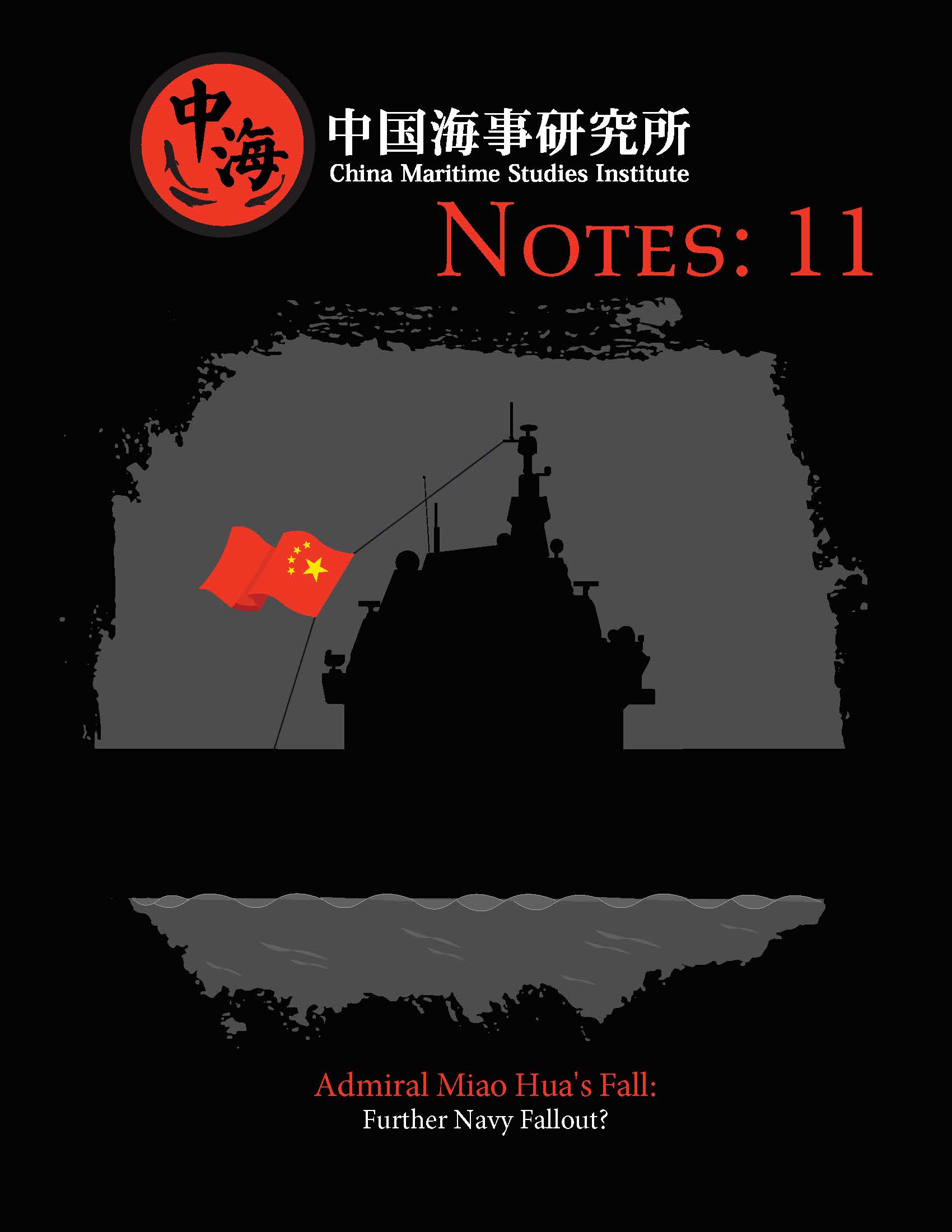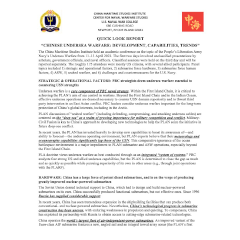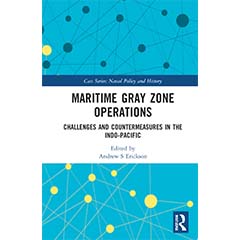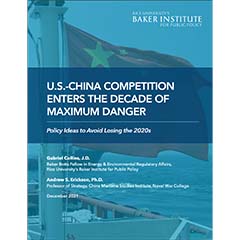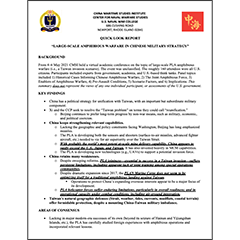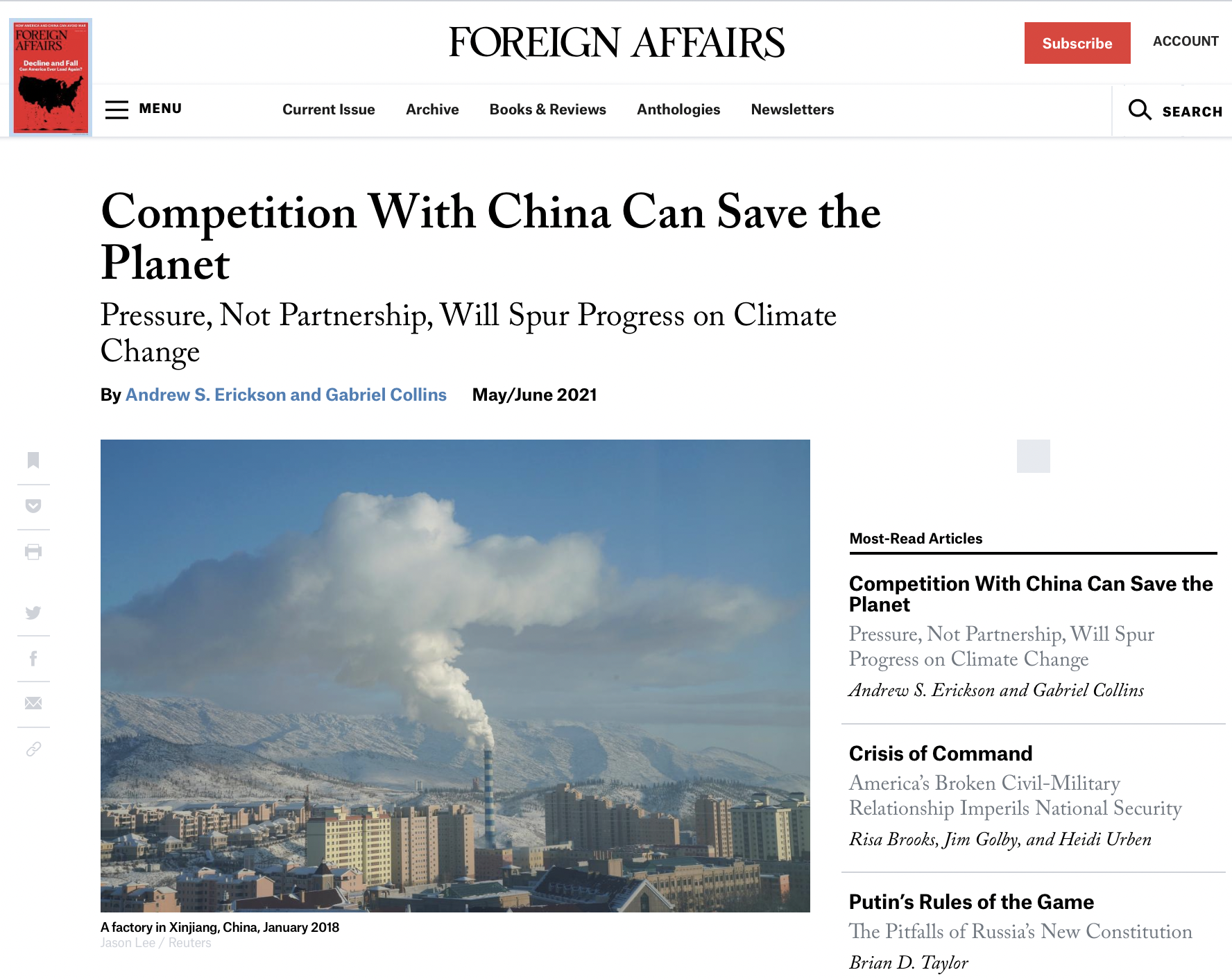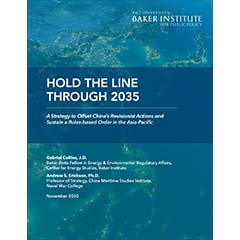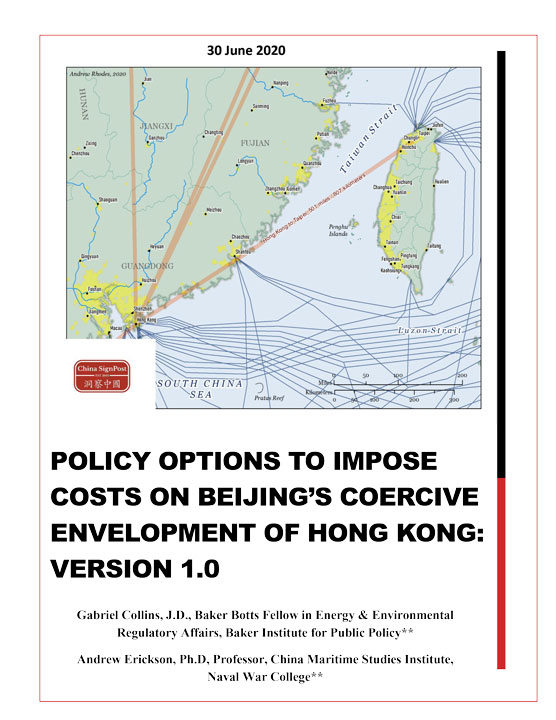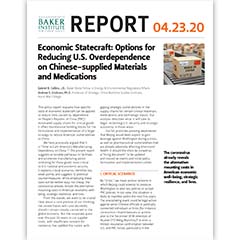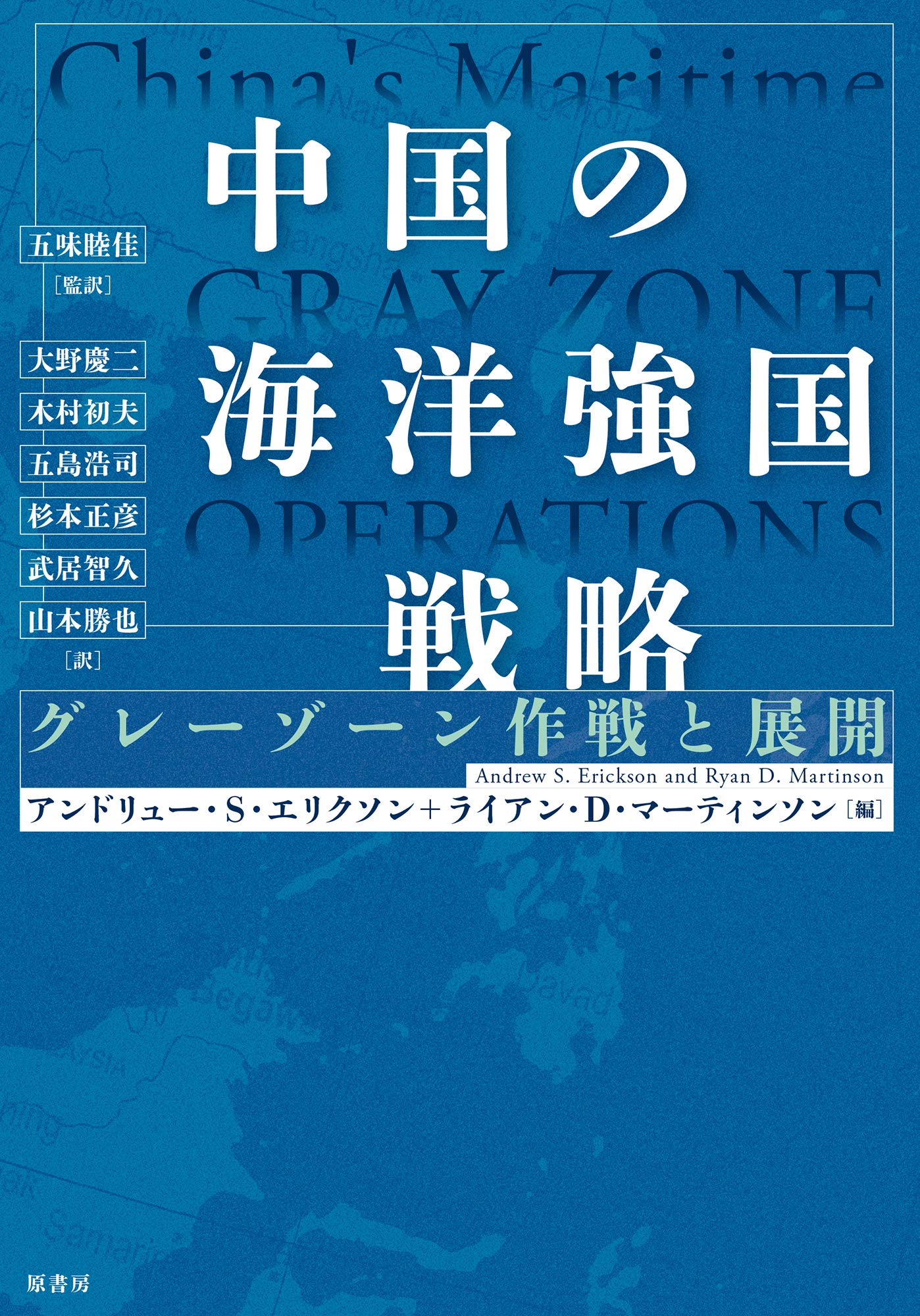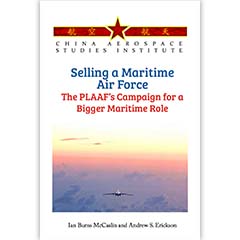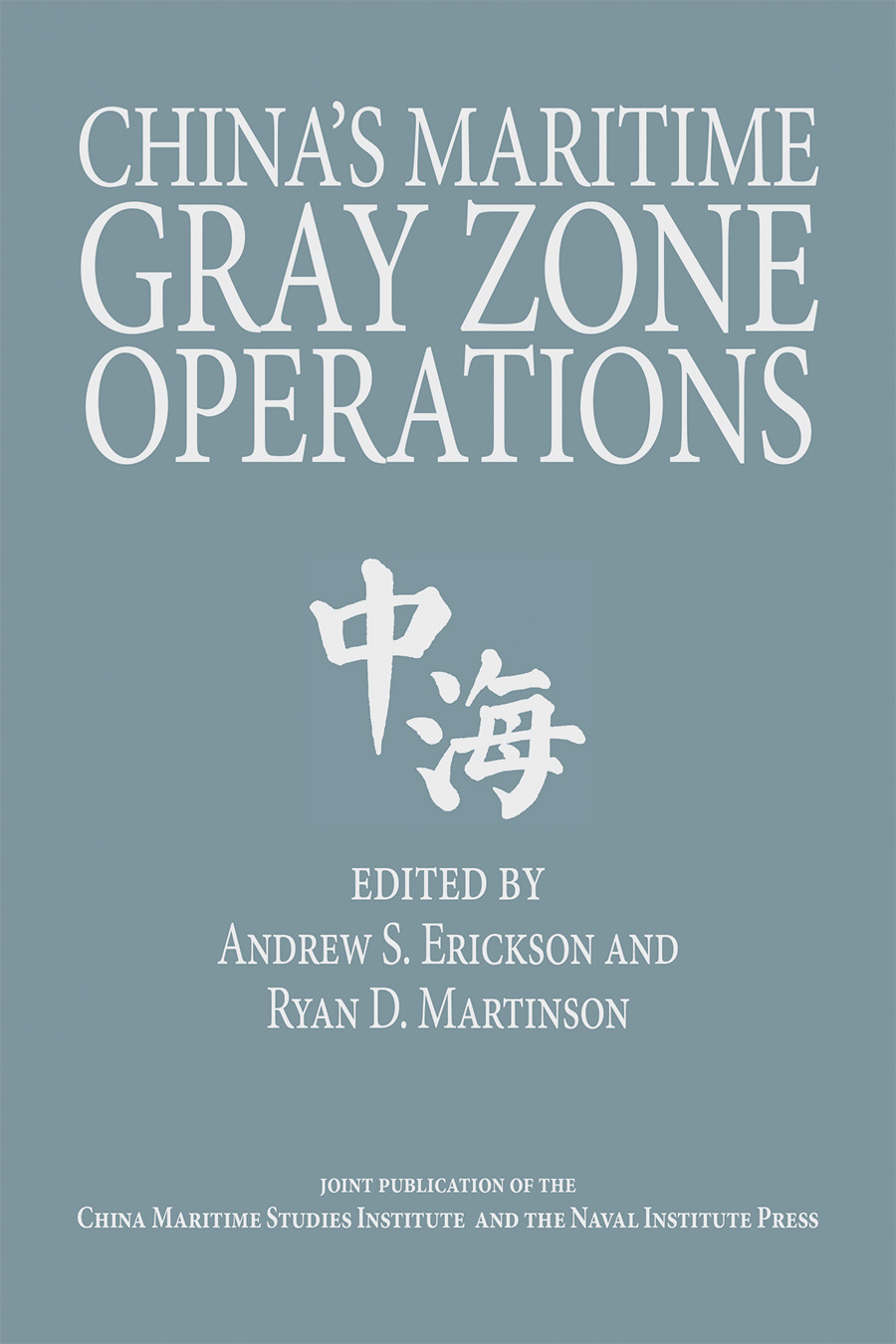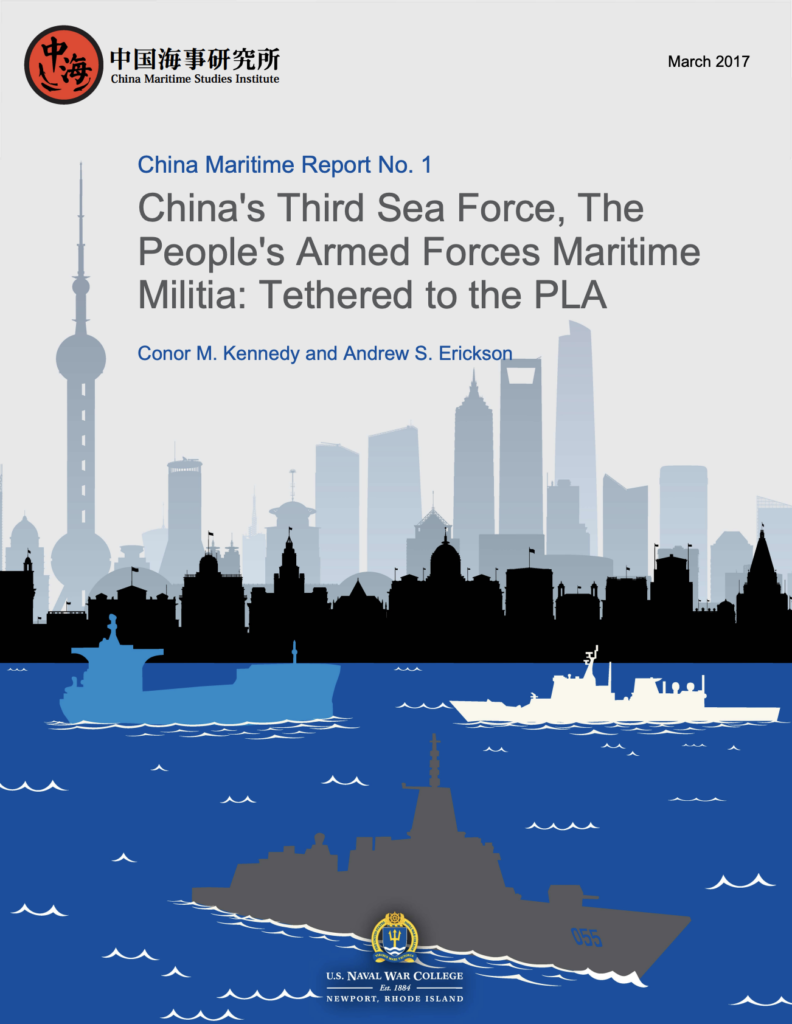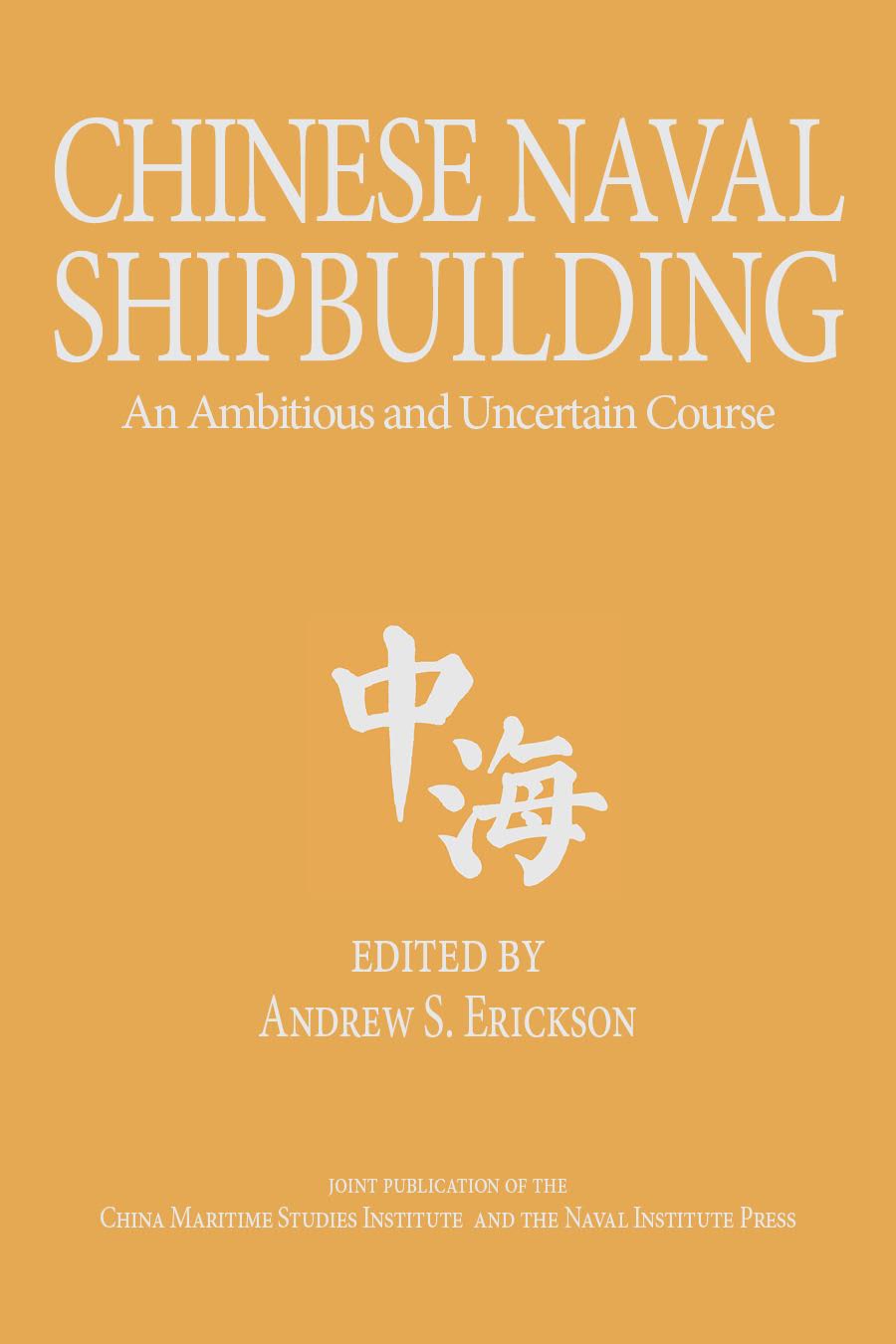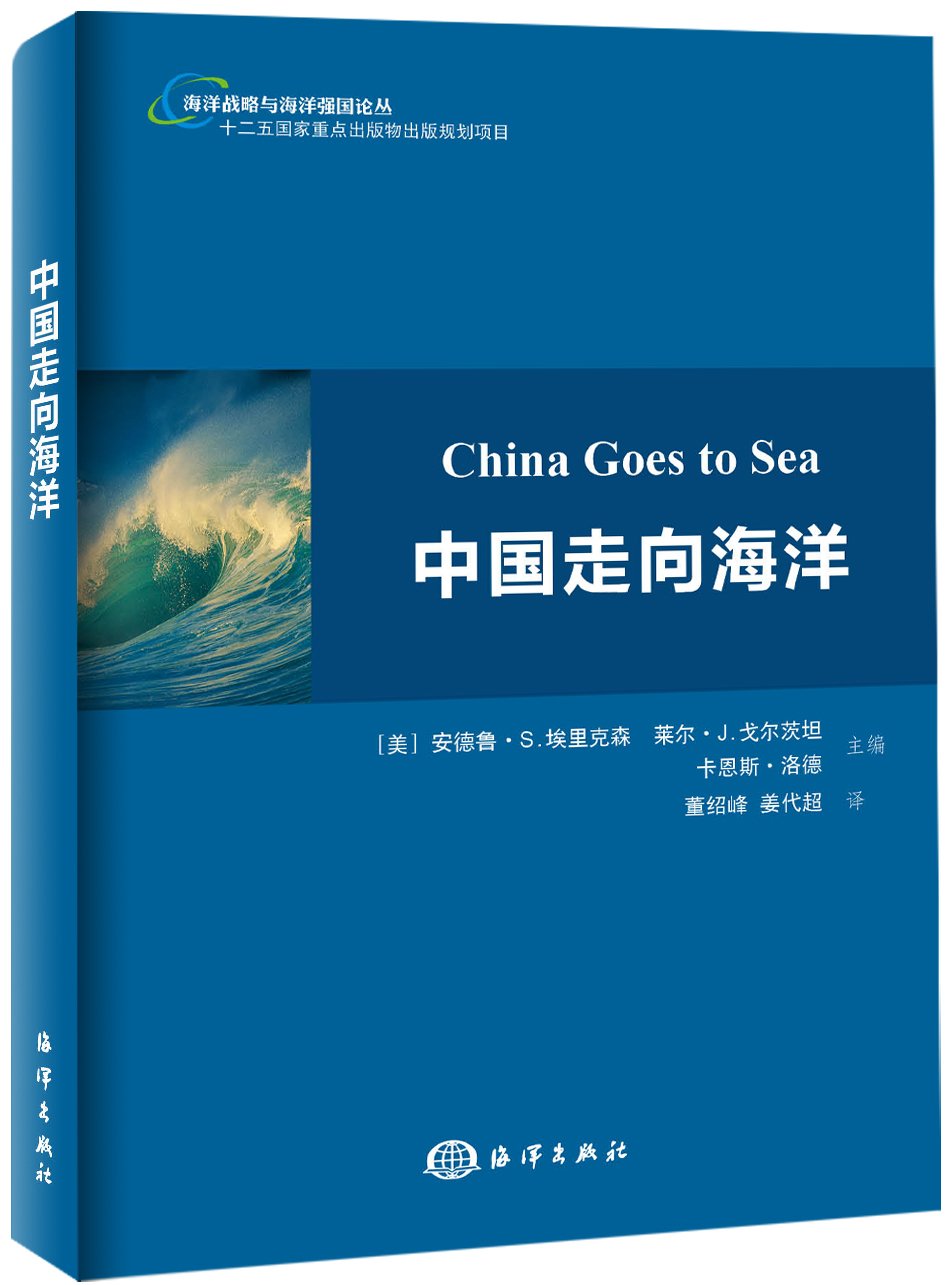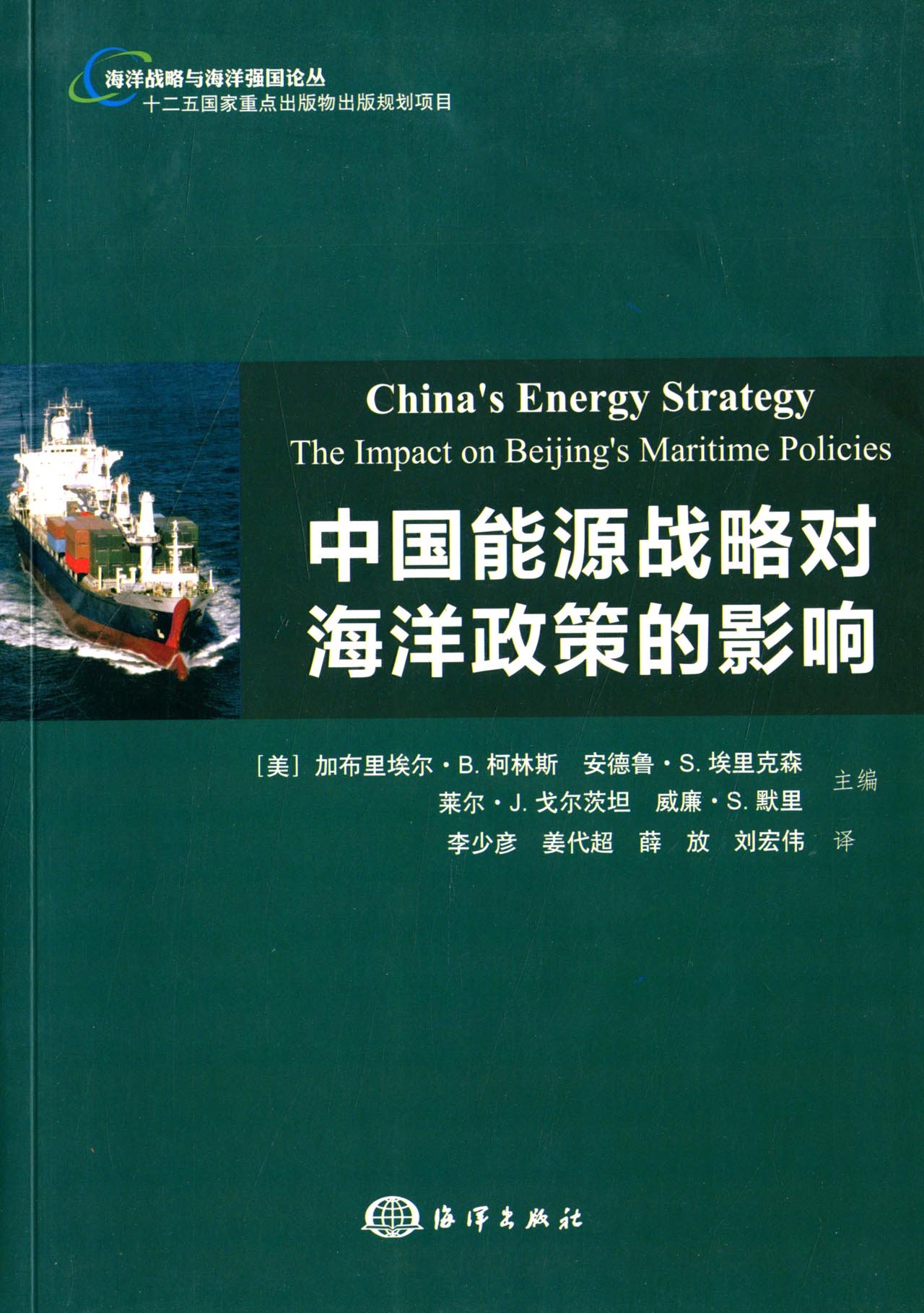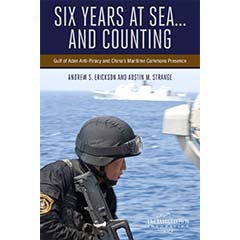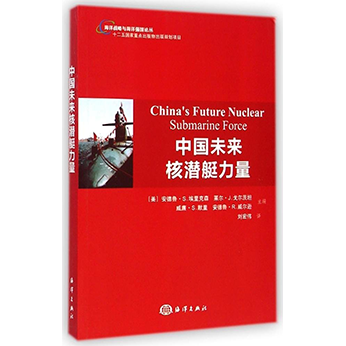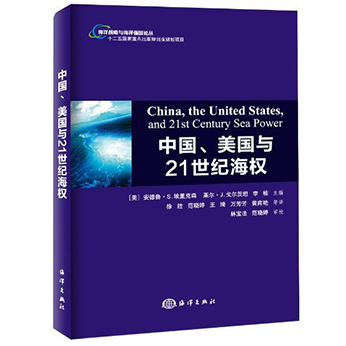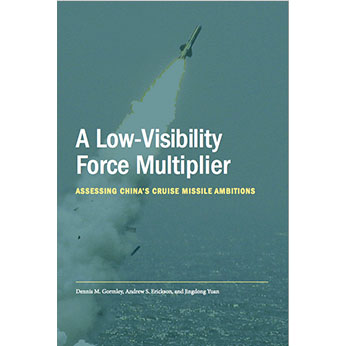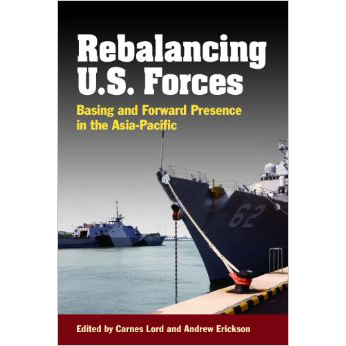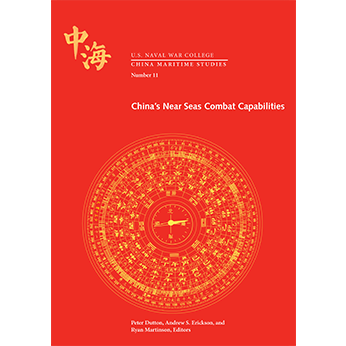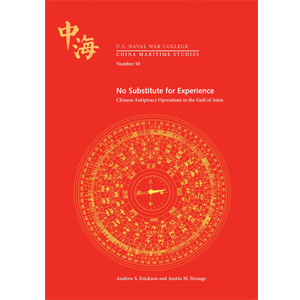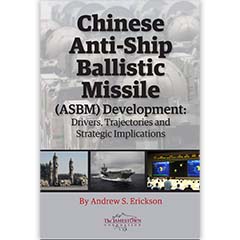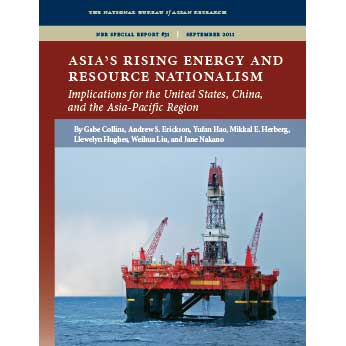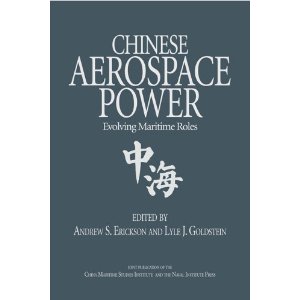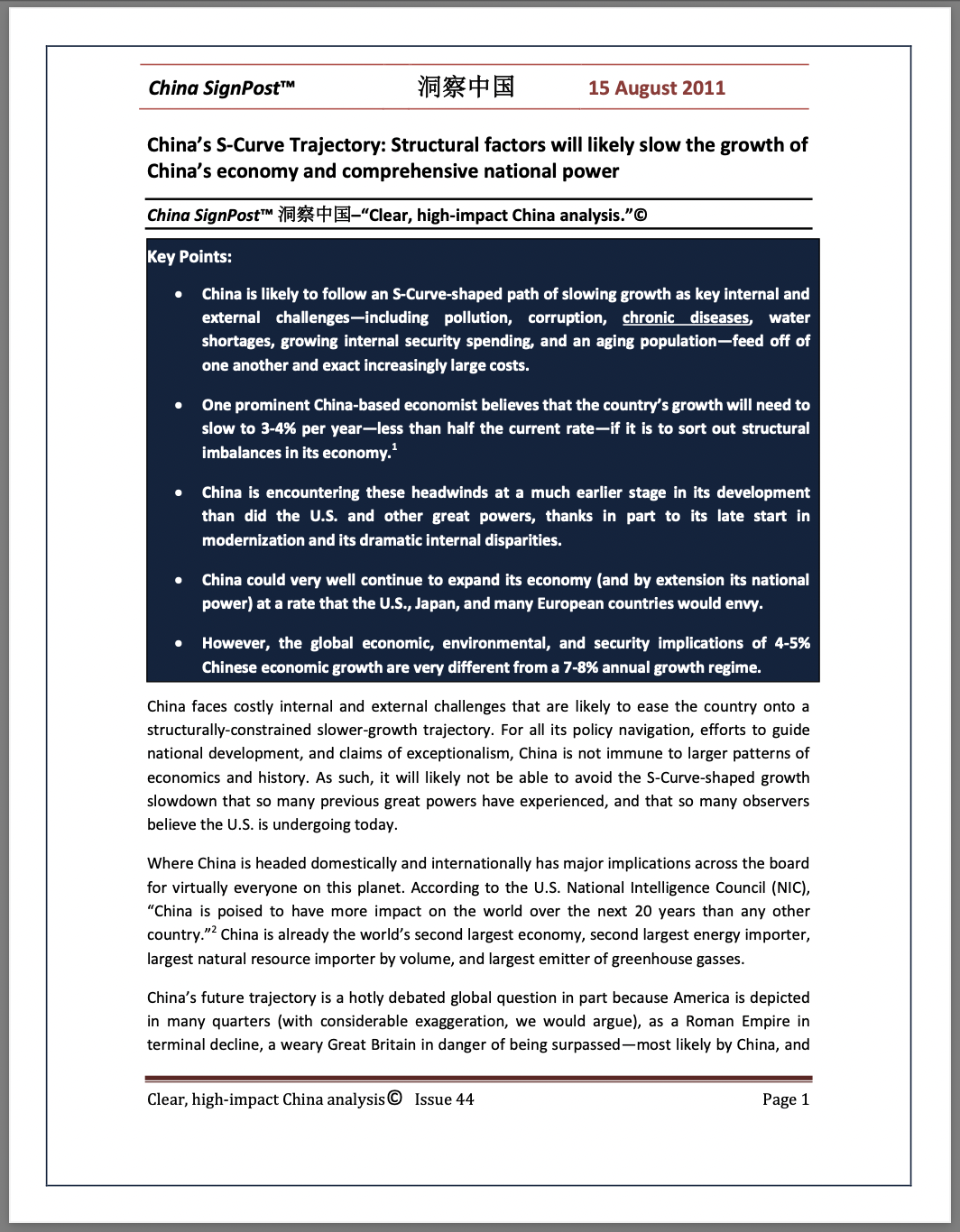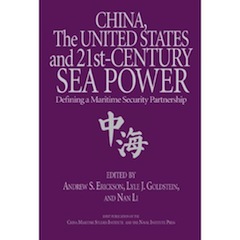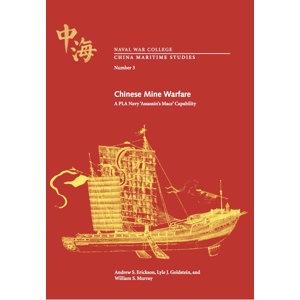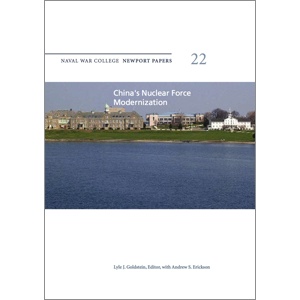The China Navy Leadership Bookshelf
Since Xi assumed power in 2012, an extraordinary array of flag and general officers, as well as defense industry leaders, has been removed. By my running tally, this includes:
- 15+ senior military officials & defense industry executives.
- 8 CMC members, including Vice Chairman General He Weidong.
- 15+ military deputies to National People’s Congress (since March 2023 alone).
- 79+ senior PLA officials at the Vice Admiral/Lieutenant General (2-star) level & above.
- Nearly entire PLA Rocket Force leadership (August 2024).
- 12 PLAN officers at the Rear Admiral (1-star) level or above have been, or are rumored to have been, dismissed.
- (Note: While U.S. Flag and General Officers top out at the 4-star level, PRC Flag and General Officers top out at the 3-star level.)
And Xi’s anti-“corruption” fight is only intensifying. China’s top disciplinary agency, the CCP Central Commission for Discipline Inspection (CCDI), held a plenary session from 6–8 January to address anticorruption priorities for 2025. In opening the event on 6 January, Xi personally set the tone for heightened anticorruption measures in the year ahead. “Corruption is the biggest threat facing the [Communist] Party,” Xi declared. “We must…further strengthen our determination and confidence in the fight against corruption.” Anticorruption will be a leading theme for the foreseeable future; although, with the Party inherently above the law but subject to elite power struggles, graft and influence peddling endemic, and enforcement highly politicized, it must be understood in the PRC’s own context.
Amid all this, dramatic rumors are swirling. “Shoes” are continuing to drop. Hyperbolic headlines surged after Pentagon’s 18 December 2024 China Military Power Reportrelease, with “Impacts of Corruption on the PLA” one of 3 Special Topics. What are the implications for PLA(N) control and capabilities? Some go so far as to conclude that because corruption is so bad, the PLA(N) cannot be very good. That notion I firmly disagree with. In my latest publications, I grapple directly with this important issue, and explain my reasoning.
We should all be able to agree that, with all this going on, it’s never been more important to understand China’s naval leadership! Here I’ve compiled my research on this subject published throughout Xi’s “New Era.” I’ll continue my studies and keep this Bookshelf updated as best I can. Thank you for your attention!
MY RESEARCH (CO)PUBLISHED TO DATE:
Andrew S. Erickson and Christopher H. Sharman, “PLAN Chief of Staff VADM Li Hanjun: Fast-Rising Star of Training and Education Extinguished,” CMSI Note 15 (Newport, RI: Naval War College China Maritime Studies Institute, 30 June 2025).
CLICK HERE TO DOWNLOAD A CACHED PDF COPY.
From CMSI Director Christopher Sharman:
China Navy Watchers: Another senior People’s Liberation Army Navy (PLAN) flag officer with a remarkable background has been dismissed. What are the implications for the PLAN and the PLA more broadly?
On 27 June 2025, the Chief of Staff of the People’s Liberation Army Navy (PLAN), Vice Admiral Li Hanjun was dismissed from his position as a deputy to China’s 14th National People’s Congress (NPC) by the Navy Servicemen’s Congress.
The China Maritime Studies Institute (CMSI) is pleased to provide you with a fast-turn CMSI Note – “PLAN Chief of Staff VADM Li Hanjun: Fast-Rising Star of Training and Education Extinguished.”
Here are some Key Findings from this CMSI Note:
VADM Li Hanjun was a fast-rising star, terminated before he could make his full contribution and career achievements:
- VADM Li’s senior roles, including at the Dalian Naval Academy and as Commandant of the Naval Command College, suggest he was well known and respected across the fleet.
- Li has influenced a generation of current PLAN operational leaders. His relentless advocacy of high-intensity training in both service-specific and joint roles suggest he had outsized influence in shaping the trajectory of current PLAN training.
- The reasons for Vice Admiral Li’s removal remain opaque, but likely related to the downfall of Admiral Miao Hua, who would have been involved in Li’s selection and promotions through the flag ranks.
- VADM Li Hanjun’s defenestration comes just months after another leader with tremendous operational experience—VADM Li Pengcheng—was similarly removed as Deputy Commander of the Southern Theater Command, but their respective purges do not appear to have slowed the pace and scope of PLAN training around Taiwan, in the South China Sea, or in the Western Pacific.
- The removal of VADM Li Hanjun would suggest that Xi believes he can burn through a tremendous amount of talent to make the PLA into the force he envisions. If Xi continues to feel he can afford this price, then we must seriously consider the possibility that a degree of military leadership churn is “priced in” to his approach to building the world class forces he seeks.
Download this CMSI Note HERE.
PLAN Chief of Staff VADM Li Hanjun:
Fast-Rising Star of Training and Education Extinguished
Andrew S. Erickson and Christopher H. Sharman[1]
On 27 June 2025, the Chief of Staff of the People’s Liberation Army Navy (PLAN), Vice Admiral (VADM/海军中将) Li Hanjun (李汉军), was dismissed from his position as a deputy to China’s 14th National People’s Congress (NPC) by the Navy Servicemen’s Congress.[2] The sixty-year-old Li had been serving as PLAN Chief of Staff (海军参谋长) for slightly over a year, since April 2024.[3]
Similarly removed from the NPC was nuclear scientist Liu Shipeng, who was a deputy chief engineer at state-owned China National Nuclear Corporation.[4] In a long-anticipated move, the NPC Standing Committee simultaneously announced that it had voted to remove Admiral Miao Hua as the Director of the Central Military Commission (CMC)’s Political Work Department, where he had overseen promotions across the People’s Liberation Army (PLA).[5] These developments indicate that the trio is being subject to serious internal disciplinary measures, designed to address “corruption” as interpreted by Commander-in-Chief Xi Jinping and prevalent throughout his thirteen years as paramount leader—namely, defined as threating his command of the PLA, and possibly the ambitious missions he has assigned it.[6] The Chinese Communist Party (CCP) leaves nothing to chance with such disciplinary measures; the termination of their official careers is a foregone conclusion.
Key findings:
VADM Li Hanjun was a fast-rising star, terminated before he could make his full contribution and career achievements:
- VADM Li’s senior roles, including at the Dalian Naval Academy and as Commandant of the Naval Command College, suggest he was well known and respected across the fleet.
- Li has influenced a generation of current PLAN operational leaders. His relentless advocacy of high-intensity training in both service-specific and joint roles suggest he had outsized influence in shaping the trajectory of current PLAN training.
- The reasons for Vice Admiral Li’s removal remain opaque, but likely related to the downfall of Admiral Miao Hua, who would have been involved in Li’s selection and promotions through the flag ranks.
- VADM Li Hanjun’s defenestration comes just months after another leader with tremendous operational experience—VADM Li Pengcheng—was similarly removed as Deputy Commander of the Southern Theater Command, but their respective purges do not appear to have slowed the pace and scope of PLAN training around Taiwan, in the South China Sea, or in the Western Pacific.
- The removal of VADM Li Hanjun would suggest that Xi believes he can burn through a tremendous amount of talent to make the PLA into the force he envisions. If Xi continues to feel he can afford this price, then we must seriously consider the possibility that a degree of military leadership churn is “priced in” to his approach to building the world class forces he seeks.
Stellar Career: Leadership in Surface Warfare, Training, Education, Bureaucracy
Li Hanjun was born in October 1965 near East Sea Fleet Headquarters, in Dinghai District, Zhoushan City, Zhejiang Province.[7] With a strong academic record, he was admitted to Zhoushan Middle School in 1980. In July 1982, Li graduated and was admitted later that year to the Dalian Naval Academy, which focuses on surface warfare. He entered at the age of 18 in 1983. As a second-year student in 1984, Li participated in the naval cadet formation within China’s 35th National Day Parade.[8]
Li’s long, successful naval career began with service in fleet units, rapidly building operational experience as a fast-track surface warfare officer and leader aboard various warships in what is now the Eastern Theater Command Navy (ETCN).[9] From 2000–02, Senior Captain (SCAPT/海军大校) Li was a Deputy Chief of Staff of the 6th Destroyer Zhidui [Division] (East Sea Fleet Unit 91991 in Zhoushan, Zhejiang Province). Also in 2002, SCAPT Li studied abroad at the Kuznetsov Naval Academy in Russia, where his classmates included American and British officers.[10] From early 2002 to 2005, Li was Chief of Staff of the 6th Destroyer Zhidui. Hailed as a promising young officer with a talent for understanding new technology, in 2002 Li was one of three outstanding young ship captains recognized by name who were then assuming a command post in a combat formation.[11] Meanwhile, from Fall 2003 to July 2005, in what was apparently his capstone educational achievement, Li was part of “the first class/cohort of the graduate program for early and mid-career officers at the National Defense University” (国防大学首期中青班研究生).[12]
While a student in the program, Li was invited to contribute a lengthy article to Youth Reference, a magazine under the prominent China Youth Daily, the official newspaper of the Communist Youth League of China. Underscoring the importance of China’s advances in naval diplomacy as his overall theme, Li related how the 6th Destroyer Zhidui’s ships had visited Hong Kong and foreign countries more than a dozen times; received hundreds of foreign military visits; and conducted joint maritime exercises with foreign ships many times, some of which Li participated in himself. Li assigned great weight to an experience he had in Saint Petersburg: “I attended the New Year’s reception of the Russian Naval Academy in 2003. At that time, the Admiral who was President of the Academy took the initiative to toast to our Chinese cadets, and wished the Chinese cadets a happy New Year in front of more than 500 people, and wished the Chinese Navy development and growth. South Korean students were very envious and wanted to toast to the President, but the Dean of the Foreign Training Department stopped them. This incident seems small, but it is actually a comprehensive reflection of factors such as international status, military strength, and officer quality.”[13]
During 2006–09 Li served as a Deputy Commander of the 6th Destroyer Zhidui. In 2006, as a member of the Standing Committee of the 6th Destroyer Zhidui’s Party Committee, Li was credited with having conducted “in-depth research on information-based training for naval units.” Amid efforts to renovate and upgrade ship training simulation classrooms and strengthen training approaches, Li had the lead speaking role at a Party Committee Training Session designed to root out weaknesses and problems. He was credited with enumerating “more than 10 issues and analyz[ing] their causes with precision.” His participation in this event placed him at the forefront of efforts to improve service training.[14] An interview conducted in 2009 states that Li also served as Captain of a new-type guided missile frigate, almost certainly a Type 054A, the first of which was delivered in 2008.[15]
From at least spring through fall 2009, SCAPT Li served as a Deputy Commandant of his alma mater, Dalian Naval Academy. A 26 May 2009 PLA Daily article quotes Li as Deputy Commandant explaining his institution’s implementation of a “‘menu-style’ trial lecture system” for evaluating faculty lesson plans that better engages faculty and students alike and “helps improve the overall quality of lesson preparation.”[16] A Xinhua article from 1 October 2009 still identified Li as a Deputy Commandant in Dalian,[17] while a 23 September 2009 Xinhua article[18] and an 18 November 2009 PLA Daily article referred to him as Director of the PLAN Headquarters Department’s Training Department in Beijing.[19] In what was apparently his final public action as second in the leadership of Dalian Naval Academy, Li led the Naval Cadet formation as its Commander, composed of Dalian Naval Academy undergraduates, for the 60th National Day Parade in Beijing on 1 October 2009.[20]
From October 2009–November 2013, SCAPT Li Hanjun served as Director, PLAN Headquarters Department’s Training Department (海军司令部训练部部长).[21] Notably, a key rising star contemporary, then-SCAPT Li Pengcheng, served as Director of the PLAN Headquarters Department’s Navigation Assurance Department from 2007–11, thereby overlapping with SCAPT Li Hanjun at PLAN HQ during 2009–11.[22] In this capacity, Li Hanjun oversaw the implementation of new training and evaluation methods, including an emphasis on the innovative use of opposition forces.[23] In late July 2010, PLA Chief of General Staff General Chen Bingde personally led an exercise involving the largest number of servicemembers in recent years, as well as nearly 100 warships and dozens of warplanes. The multi-service joint exercise in a complex electromagnetic environment proved a great success, and Chen hailed it as a model for the PLA writ large. Li Hanjun, given an exclusive interview with People’s Navy reporters and the last word in their article, explained that “Multi-service joint training has gradually become a regular mode of naval training, and even ordinary maritime training is no longer a ‘one-man show’ for a single service.”[24] In January 2011, SCAPT Li Hanjun articulated to People’s Navy a comprehensive regimen of instructional and training reforms to be implemented over the next 2–3 years. The sweeping measures included a battery of new guidance, instructions, curricula, textbooks, exercises, and evaluations, with informatization and integration emphasized throughout.[25]
Entering his final year in the position as Director of the Training Department, in September 2012 SCAPT Li was profiled in an extensive interview on the front page of his service’s internal newspaper, People’s Navy. Like then-SCAPT Li Pengcheng during his innovative commanding of the 16th Naval Escort Task Force in the Gulf of Aden in December 2013, SCAPT Li Hanjun was featured prominently precisely where the top brass would all have seen it—an advantageous position indeed. Li expounded on his service’s official training plans and ongoing training reforms. He emphasized the imperative to enhance the quality and modalities of training in order to exploit informatization, support “the new mode of generating combat effectiveness,” and thereby successfully address “new forms of warfare and operational patterns.” An urgent priority, Li explained, was generating “large-scale joint combat capabilities to ‘oppose independence and promote reunification’” (“反独促统”大规模联合作战能力)—a clear reference to Taiwan scenarios. While on the surface the sort of officially sanctioned virtue signaling that powers promotion to higher levels, Li’s statements were also rooted firmly in ongoing advances in actual PLAN capabilities that were readily observable to outside observers.[26]
In May 2013, Li was involved in a seven-day command confrontation exercise involving a joint combat formation command post.[27] The drill tested existing PLAN operational plans and promoted the innovative development of joint combat tactics and training methods under informatized conditions. North and East Sea Fleet bases participated, with strong support from the Naval Command College in Nanjing—the PLAN’s seniormost school, ranked first in protocol order.[28] This last event seemed to foreshadow Li’s next known position.
Li’s position from November 2013–April 2014 remains unclear, but he subsequently transitioned to leadership in naval education, coming full circle from his own undergraduate, military parade, and exercise experience. From April 2014–December 2014, SCAPT Li served as Director of the Naval Command College’s Training Department (海军指挥学院训练部部长).
On 29 December 2014, at a ceremony over which PLAN Commander Wu Shengli and Political Commissar Admiral Miao Hua presided, Li was promoted to Rear Admiral (RADM/海军少将) and appointed Commander of the then-East Sea Fleet (now ETCN) Fujian Base (东海舰队福建基地/东部战区海军福建基地, Unit 92403), a position he held through July 2017.[29] RADM Li’s 2014 promotion coincides with Admiral Miao’s becoming PLAN Political Commissar,[30] and Li’s subsequent promotions all occurred during Miao’s ascendance to influence PLAN, and ultimately all PLA, promotions.[31] Li’s succession of positions around this time certainly suggest the speed with which he advanced in his career.
Building on his East China Sea-centric experience, as Fujian Base Commander Li had a strategic role overseeing significant PLAN unit training, coastal defense operations, operational readiness, and preparation for major contingencies—particularly a frontline focus on Taiwan. In this capacity, in January 2015, Li was the operations officer for an East Sea Fleet warship formation (编队参谋长) during long-range “far seas” (远海) training exercise in the Western Pacific. “What is realistic training?” he told the PLAN’s official magazine. “This training is the proof. Only through such high-intensity saturation-style confrontational training can we further identify issues, resolve them, gain a clear understanding of our capabilities, and build confidence, thereby breaking free from the vicious cycle of ‘the less we know, the less we dare to train, and the less we dare to train, the less we know.’”[32] In March 2015, Li was quoted as stressing the all-consuming imperative to be ready to fight and win at sea.[33] In early May 2015, Li led a major training session at his base that forced commanders at the division, brigade, and regiment level to consider closely bottlenecks, deficiencies, and how to enhance their command capabilities. Li explained that they embraced “new concepts of systematic operations, joint operations, and information victory” to enhance their ability to command under realistic informatized conditions, and thereby to fight and win actual battles.[34] In keeping with his responsibility to support the Party above all else, on 16 May 2015 Li hosted and participated in a major ideological work conference at the Fujian Base.[35]
Li subsequently served in two successive CMC roles. From July 2017–June 2018, RADM Li served as a Deputy Director of the CMC Office for Reform and Organizational Structure (中央军委改革和编制办公室副主任).[36]Established in January 2016, this first-level department under the CMC is responsible for planning, coordinating, and implementing national defense and military reforms and managing military staffing and organization.[37] As a Deputy Director, Li assisted the Director in planning reforms, coordinating implementation across branches, and managing PLA organizational structure and personnel allocations. Within the upper echelons of China’s military leadership, Li shaped PLA-wide structural reforms, from streamlining forces and regional commands to revising personnel frameworks. On 23 July 2017, Li appeared with two other Deputy Directors in the seventh episode of the major political feature film “The Road to a Strong Army” (Part 1) on CCTV.[38]
From June 2018–December 2021, RADM Li served as a Deputy Director of the CMC Training and Administration Department (中央军委训练管理部副部长).[39] Established in November 2015 as a first-tier, Vice-Commander-level organ under the CMC, the Department was designed to further the unified planning and oversight of military training for the entire PLA, improve the management of servicemembers and schoolhouses, better integrate training and unit administration to enhance rule-based military governance and strengthen warfighting capacity.[40] In this capacity, Li helped oversee PLA-wide military training and administrative policy. In a sign of inter-service awareness and credibility, on 5 July 2018 Li attended the PLA Air Force’s Biannual Military Training Video Teleconference (半年军事训练电视电话会议) in Beijing to offer guidance.[41]
From December 2021–April 2024, RADM Li was back at the Naval Command College in Nanjing, this time as its Commandant (海军指挥学院院长).[42] On 14 June 2022, together with RADM Li Pengcheng and the other PLAN top brass, RADM Li Hanjun served as one of 28 executive chairmen of the opening ceremony of the 13th Congress of the Chinese Communist Party Navy at PLAN Headquarters, which convened more than 500 PLAN Party representatives to discuss major Navy affairs and development plans.[43] In February 2023, Li was selected as one of 281 delegates from the PLA and People’s Armed Police Force to the 14th NPC, the first session of which he participated in the following month.[44] As a military deputy (delegate) attending the NPC and the Chinese People’s Political Consultative Conference, Li embraced Xi’s “three-step” military development goals for 2027, 2035, and 2049. “Advancing the Centennial Military Building Goal [of 2027] is a profound change that affects the overall development of our military,” Li intoned. Among urgent efforts to overcome obstacles and accelerate progress, he called for “focusing on combat readiness.”[45] In December 2023, Li was promoted to Vice Admiral. As Naval Command College Commandant, Li built on an ongoing partnership with Peking University to bring some of his faculty, staff, and students there for learning and exchange in December 2023.[46] On 5 March 2024, at the opening of the second session of the 14th NPC, VADM Li Hanjun joined fellow deputies and military representatives, including VADM Li Pengcheng, in discussing progress and remaining requirements for the reform and strengthening of China’s military. “The current and future period is a critical period for the modernization of national defense and the military,” Li Hanjun emphasized.[47] It would prove to be the last NPC attendance for both of them.
From April 2024–June 2025, VADM Li served as the PLAN’s Chief of Staff. He succeeded now-PLAN Commander Admiral Hu Zhongming, who had left the position on 26 December 2023 to become PLAN Commander.[48] As Chief of Staff, Li was head of the PLAN Staff Department, and thereby in charge of the major bureaus at the PLAN Headquarters, such as the Training Bureau, Operations Bureau, Planning and Organization Bureau.[49] Accordingly, he was involved in all the key policy decisions pertaining to the future of the service. That Hu Zhongming was his predecessor there further suggests the importance of the post. Li’s first observable public appearance as Chief of Staff occurred in April 2024.[50] On 24 April 2024, Li attended a major ceremony at the Navy Museum in Qingdao together with PLAN Commander Hu and Political Commissar Admiral Yuan Huazhi, presided over by Deputy Political Commissar Cheng Jian.[51] Li visited a museum at Renmin University of China in Beijing on 12 July 2024.[52] Of note, despite his inherently public role, Admiral Yuan has not been observed or heard from publicly since 7 September 2024.
Conclusion: Burning Talent, More to Spare—Churn “Priced in”?
VADM Li Hanjun was an extremely competent naval officer, someone who made significant contributions to both the PLAN and to the PLA more generally. Yet that did not save him from being sacked. His perceived transgressions—whatever they were—were clearly judged more important than his past achievements and potential future offerings.
VADM Li has influenced a generation of current PLAN operational leaders, particularly through training and education. His previous senior roles at both the Dalian Naval Academy, and as Commandant of the Nanjing Naval Command Academy until last year, suggest he was well known across the fleet. His relentless pursuit of rigor in training likely has served as a template for the PLAN’s current high-intensity training focus. Moreover, his influential position as a Deputy Director of the CMC Training and Administration Department would have enabled him to help to shape training across the force and to help codify PLAN training initiatives. VADM Li’s service and joint pedigree—including his recent high-profile role as the PLAN Chief of Staff, in particular—also suggest he was once among the few who might be considered by Xi to serve as a future PLAN Commander. His defenestration, therefore, is likely to send shivers across the PLAN’s current force.
While all services are working to some degree or another on developing “joint” capabilities, VADM Li’s recognition of multi-service joint training’s value is particularly noteworthy. His featured role in the 2010 joint exercise and his participation in the Air Force Biannual Military Training Video Teleconference in 2018 suggests he may have played an outsized role throughout the more senior portion of his career in influencing the PLAN’s contribution to overall PLA joint training. His CMC role in organizational reforms around 2017 is incredibly important. The PLA organizational reforms “below the neck” began that year, and those “above the neck” had occurred just two years earlier. Li was doubtless responsible for helping to guide the PLA and the PLAN through the inevitable challenges accompanied these reforms. Li’s focus on jointness is far more than an intra-service focus, and affords a rare glimpse into interservice joint efforts.
VADM Li’s operational prowess will certainly be missed in the PLAN. His purge comes just months after another leader with tremendous operational experience, VADM Li Pengcheng, was removed. Their respective careers indicate the two men were peers, overlapping at several points in their moves up through the ranks. Li Hanjun was promoted and noted near Li Pengcheng at several points along the way, including his promotion to flag, their overlapping at PLAN HQ during 2009–11, and their respective service as deputies to the 13th and 14th NPCs. While the reasons for both their removals remain opaque to foreign observers, their respective connections to, and promotions overseen by, Admiral Miao Hua may well have been their downfall. Li Hanjun shared with Miao Hua an early Taiwan-centric career focus in Fujian Province, in what was then the Nanjing Military Region and is now the Eastern Theater Command. Li Hanjun’s 2014 rank promotion coincides with Miao’s becoming PLAN Political Commissar, and Li’s subsequent promotions all occurred during Miao’s ascendance to influence PLAN, and ultimately all PLA, promotions.
Despite the removal of Admirals Li Hanjun, Li Pengcheng, Miao Hua, and others, however, the PLAN continues to demonstrate first-rate operational capabilities of constantly growing strength and sophistication—the most recent of which was the PLAN’s first-ever dual aircraft carrier operations in the Western Pacific, an unprecedented feat conducted shortly before their termination was announced. As Chief of Staff, VADM Li Hanjun could well have been in the approval chain for these historic carrier operations. The removal of these leading flag officers does not appear to have slowed the pace of PLAN training or altered the course of developing the capabilities that Xi demands. These removals, which have not produced any negative observable operational impact, would suggest that Xi believes he can burn through a tremendous amount of talent to make the PLA into the force he envisions. If Xi continues to feel he can afford this price, then we must seriously take into consideration the possibility that a degree of military leadership churn is “priced in” to his approach to building the world-class and Taiwan-relevant forces that he so urgently seeks.
[1] Dr. Erickson is Professor of Strategy at CMSI. CAPT (Ret.) Sharman is Director of CMSI. This CMSI Note does not necessarily represent the views, policies, or positions of the U.S. Department of Defense or its components, to include the Department of the Navy or the U.S. Naval War College. The views expressed here, based solely on open sources, are the authors’ alone, as well as any errors; they made every effort to double-check data during the less than seventy-two hours between the announcement of Vice Admiral Li’s dismissal and this note’s publication. The authors thank Ken Allen, Ryan Martinson, and TextOre for invaluable inputs. The authors welcome suggestions for improvement via www.andrewerickson.com/contact.
[2] 全国人民代表大会常务委员会 [Standing Committee of the National People’s Congress], 受权发布丨全国人民代表大会常务委员会公告〔十四届〕第十一号 [Authorized Release | Announcement of the Standing Committee of the National People’s Congress (14th Session) No. 11], 新华社 [Xinhua News Agency], 27 June 2025, http://www.news.cn/20250627/fe15ca91e1ea4fa9a163f4e9e7cb8291/c.html.
[3] The PLAN Chief of Staff is part of the PLAN’s top leadership, but not at the very top. Issues of People’s Navy that report on a PLAN leadership meeting indicate the following protocol order: the Chief of Staff comes after the Commander, Political Commissar, Deputy Commanders, 1-2 Deputy Political Commissars, and the Secretary of the Discipline Inspection Committee.
[4] SCMP Reporter, “Chinese Navy Chief of Staff and Nuclear Scientist Expelled from Top Legislature,” South China Morning Post, 27 June 2025, https://www.scmp.com/news/china/military/article/3316110/chinese-navy-chief-staff-and-nuclear-scientist-expelled-top-legislature.
[5] Andrew S. Erickson and Christopher H. Sharman, “Admiral Miao Hua’s Fall: Further Navy Fallout?” CMSI Note 11 (Newport, RI: Naval War College China Maritime Studies Institute, 28 November 2024), https://digital-commons.usnwc.edu/cmsi-notes/11/.
[6] Regarding comparative definitions of “corruption,” see Andrew S. Erickson, “Admiral Wang Renhua: Exemplifying Jointness and Oversight for China’s Navy amid Xi’s Grade-and-Rank Reforms,” CMSI Note 5 (Newport, RI: Naval War College China Maritime Studies Institute, 11 April 2024), https://digital-commons.usnwc.edu/cmsi-notes/5/.
[7] “China Displays Its Most Advanced Weapons in National Day Parade,” Xinhua, 1 October 2009, news.xinhuanet.com/English/2009-10/01/content_12146079.htm; republished in Global Times, https://www.globaltimes.cn/content/474047.shtml.
[8] 本报记者 钱晓虎 [Our Reporter Qian Xiaohu], “力量与智慧的交响 科学与技术的协奏 阅兵村里的 ‘科技元素’” [A Symphony of Strength and Wisdom, A Concert of Science and Technology: The “Elements of Science and Technology” in the Parade Village], 解放军报[PLA Daily], 13 September 2009, 2; “海军学员方队李汉军: 培养舰长不容易(图)” [Navy Cadet Formation Leader Li Hanjun: Cultivating Captains is Not Easy], Xinhua, 1 October 2009, http://news.xinhuanet.com/mil/2009-10/01/content_12136600.htm; 5 October 2009, https://mil.news.sina.com.cn/2009-10-05/1304569209.html.
[9] This paragraph draws in part on Jeffrey Becker, David Liebenberg, and Peter Mackenzie, Behind the Periscope: Leadership in China’s NavyCRM-2013-U-006467-Final (Alexandria, VA: CNA Corporation, December 2013), 156, https://www.cna.org/archive/CNA_Files/pdf/crm-2013-u-006467-final.pdf.
[10] 李仲越 本报记者 钱晓虎 [Li Zhongyue, reporter of this newspaper, and Qian Xiaohu], 儒雅舰长训精兵 [The Elegant Captain Trains Elite Soldiers], 解放军报 [PLA Daily], 2 October 2009, 12; “海军学员方队李汉军: 培养舰长不容易(图)” [Navy Cadet Formation Leader Li Hanjun: Cultivating Captains is Not Easy], Xinhua, 1 October 2009, http://news.xinhuanet.com/mil/2009-10/01/content_12136600.htm; 5 October 2009, https://mil.news.sina.com.cn/2009-10-05/1304569209.html; 本报特约通讯员 邓佑标 [Special Correspondent Deng Youbiao], “大海的韵律——记海军学员方队” [The Rhythm of the Sea—A Record of the Naval Cadet Formation], 解放军报 [PLA Daily], 18 November 2009, 6.
[11] 余子富 司彦文 [Yu Zifu and Si Yanwen], “一批优秀干部走上指挥岗位” [A Group of Outstanding Cadres Takes up Command Positions], 解放军报 [PLA Daily], 28 September 2002; 余子富、记者司彦文 [Yu Zifu and reporter Si Yanwen], “中国东海舰队狠抓新装备部队人才建设” [China’s East China Sea Fleet Focuses on Talent Development for New Equipment Units], 解放军报 [PLA Daily], 28 September 2002, https://web.archive.org/web/20021020095039/http:/www.people.com.cn/GB/junshi/60/20020928/833300.html.
[12] 李仲越 本报记者 钱晓虎 [Li Zhongyue, reporter of this newspaper, and Qian Xiaohu], 儒雅舰长训精兵 [The Elegant Captain Trains Elite Soldiers], 解放军报 [PLA Daily], 2 October 2009, 12.
[13] 李汉军 [Li Hanjun], “2003-2004: 中国军事外交年” [2003-2004: China’s Year of Military Diplomacy], 青年参考 [Youth Reference], 22 June 2004, https://archive.ph/tip6A#selection-793.7-795.4.
[14] 袁珍军本报特约通讯员蔡年迟 [Yuan Zhenjun, Special Correspondent of This Newspaper, Cai Nianchi], “议训会成了“曝光台”–亲历海军某驱逐舰支队党委议训会有感” [The Training Review Meeting Became a “Public Exposure Platform”–Reflections on Attending the Training Review Meeting of the Party Committee of a Certain Destroyer Squadron of the Navy], 解放军报 [PLA Daily], 30 October 2006.
[15] “海军学员方队李汉军: 培养舰长不容易(图)” [Navy Cadet Formation Leader Li Hanjun: Cultivating Captains is Not Easy], Xinhua, 1 October 2009, http://news.xinhuanet.com/mil/2009-10/01/content_12136600.htm; 5 October 2009, https://mil.news.sina.com.cn/2009-10-05/1304569209.html.
[16] 邓佑标 [Deng Youbiao], “三个不等式说明了什么——海军大连舰艇学院抓教学质量的一段经历” [Three Inequalities Illustrate a Story—The Experience of the Dalian Naval Academy in Improving Teaching Quality], 解放军报 [PLA Daily], 26 May 2009, 10.
[17] “海军学员方队李汉军: 培养舰长不容易(图)” [Navy Cadet Formation Leader Li Hanjun: Cultivating Captains is Not Easy], Xinhua, 1 October 2009, http://news.xinhuanet.com/mil/2009-10/01/content_12136600.htm; 5 October 2009, https://mil.news.sina.com.cn/2009-10-05/1304569209.html.
[18] 记者陈万军、吴登峰 [Reporters Chen Wanjun and Wu Dengfeng], “海军8 支方(梯)参加国庆阅兵南海舰队飞豹参阅” [Eight Naval Units Participated in National Day Review of the Troops, and South Sea Fleet Flying Leopard Fighter Jets Also Participated], 新华网 [Xinhua Net], 23 September 2009, formerly at http://www.china.com.cn/news/txt/2009- 09/24/content_18590449.htm, now available via https://mil.huanqiu.com/article/9CaKrnJmsz5.
[19] 本报特约通讯员 邓佑标 [Special Correspondent Deng Youbiao], “大海的韵律——记海军学员方队” [The Rhythm of the Sea—A Record of the Naval Cadet Formation], 解放军报 [PLA Daily], 18 November 2009, 6, https://mil.news.sina.com.cn/2009-11-18/0650574239.html.
[20] “海军学员方队李汉军: 培养舰长不容易(图)” [Navy Cadet Formation Leader Li Hanjun: Cultivating Captains is Not Easy], Xinhua, 1 October 2009, http://news.xinhuanet.com/mil/2009-10/01/content_12136600.htm; 5 October 2009, https://mil.news.sina.com.cn/2009-10-05/1304569209.html.
[21] 记者陈万军、吴登峰 [Reporters Chen Wanjun and Wu Dengfeng], “海军8 支方(梯)参加国庆阅兵南海舰队飞豹参阅” [Eight Naval Units Participated in National Day Review of the Troops, and South Sea Fleet Flying Leopard Fighter Jets Also Participated], 新华网 [Xinhua Net], 23 September 2009, formerly at http://www.china.com.cn/news/txt/2009- 09/24/content_18590449.htm, now available via https://mil.huanqiu.com/article/9CaKrnJmsz5.
[22] Christopher H. Sharman and Andrew S. Erickson, Dirty But Preparing to Fight: VADM Li Pengcheng’s Downfall Amid Increasing PLAN Readiness, China Maritime Report 44 (Newport, RI: Naval War College China Maritime Studies Institute, 24 January 2025), 5, https://digital-commons.usnwc.edu/cmsi-maritime-reports/44/.
[23] 记者钱晓虎、通讯员李贵宾 [Reporter Qian Xiaohu and Correspondent Li Guibin], “海军某驱逐舰支队年终训练考核邀请3个兵种出考题 ‘密封卷’藏在对手脑袋里” [A Certain Destroyer Squadron of the Navy Invited Three Military Branches to Set Exam Questions for its Year-End Training Assessment. The “Sealed Exam Papers” Were Hidden in the Minds of the Opposing Team.], 解放军报 [PLA Daily], 16 November 2009, 5.
[24] 本报记者吴超 [Our reporter Wu Chao], “诸兵种一体大联合, 引领联演联训新风潮” [All Service Arms Are United, Leading a New Trend of Joint Exercises and Training], 人民海军 [People’s Navy], 17 December 2010, 1.
[25] 本报记者刘文平 [Our reporter Liu Wenping], “适应信息化条件下战斗力生成模式的转变需求: 海军将推进首长机关训练 ‘六个一工程 设’ 建设” [Adapting to the Changing Needs of Combat Power Generation Mode under Informatized Conditions: The Navy Will Promote the Construction of the “Six One Projects” for the Training of Chief Organs], 人民海军 [People’s Navy], 10 January 2011, 1.
[26] 本报记者梁庆松 [Our Reporter Liang Qingsong], “改革创新是军事训练发展的永恒主题–访海司军训部部长李汉军” [Reform and Innovation are the Eternal Themes of Military Training Development–Interview with Li Hanjun, Director of the PLAN Headquarters Training Department], 人民海军 [People’s Navy], 21 September 2012, 4.
[27] 周田 [Zhou Tian], “横戈未来勇探索–海军组织战法训法创新活动暨指挥对抗演习纪实” [Strongly Exploring the Future: A Record of the Navy’s Organization of Innovative Activities in Tactics and Training Methods for Command Confrontation Exercises], 人民海军 [People’s Navy], 21 May 2013, 1.
[28] For details on the Naval Command College’s extensive participation in PLAN exercises, see Andrew S. Erickson, The People of China’s Navy and Other Maritime Forces: Extended Summary of Conference Findings, China Maritime Report 47 (Newport, RI: Naval War College China Maritime Studies Institute, 28 May 2025), https://digital-commons.usnwc.edu/cmsi-maritime-reports/47/; China Maritime Studies Institute, “The People of China’s Navy and Other Maritime Forces,” Quick Look Summary of Conference Findings (Newport, RI: Naval War College, 22 May 2025), https://digital-commons.usnwc.edu/cmsi-findings/1/.
[29] 张海鹏 本报记者张庆宝 [Zhang Haipeng and our reporter Zhang Qingbao], “海军隆重举行将官军街晋升仪式 吴胜利宣读命令 苗华主持仪式” [The Navy Held a Grand ceremony to Promote Admirals. Wu Shengli Read Out the Orders, Miao Hua Presided over the Ceremony], 人民海军 [People’s Navy], 30 December 2014, 1; 吴耀谦 蒋曦[Wu Yaoqian and Jiang Xi], “海军总部将领调整到位, 12名海军大校晋升少将军衔” [The Admirals of the Naval Headquarters Were Adjusted in Place, and 12 Senior Captains Were Promoted to the Rank of Rear Admiral], 澎湃新闻 [Pengpai News], https://www.thepaper.cn/newsDetail_forward_1291014.
[30] Miao was a career Army political officer until he became the PLAN Political Commissar. He did not receive his third star as an Admiral (海军上将) until July 2015.
[31] “解放军海军参谋长李汉军被免全国人代 学者判断牵扯苗华案” [Li Hanjun, Chief of Staff of the PLA Navy, Was Removed From the National People’s Congress; Scholars Believe He Was Involved in the Miao Hua Case], 联合早报 [Lianhe Zaobao], 27 June 2025, https://www.zaobao.com.sg/news/china/story20250627-6989413.
[32] 本刊记者刘文平 张庆宝 方立华 代宗锋 [Our Reporters Liu Wenping, Zhang Qingbao, Fang Lihua, and Dai Zongfeng], “东海舰队: 赴西太平洋实兵对抗训练” [East Sea Fleet: Going to the Western Pacific for Live-Fire Confrontation Training], 当代海军 [Navy Today] (January 2015). For a similar quotation and context, see 本报记者刘文平 张庆宝 东海站记者方立华 代宗锋 [Our Reporters Liu Wenping and Zhang Qingbao, and East China Sea Station Reporters Fang Lihua and Dai Zongfeng], “砺兵, 对接未来海战爆–东海舰队舰艇编队远海训练见闻录” [Soldiers Are Trained to Prepare for Future Naval Battles—Records of the East Sea Fleet’s Fleet Training in the Open Sea], 人民海军 [People’s Navy], 7 January 2015, 4.
[33] “有一种信念在强化 有一种使命在升腾” [There is a Belief that is Strengthening and a Mission that is Rising], [People’s Navy], 30 March 2015, 2.
[34] 沈音翔 见习记者梅云龙 [Shen Yinxiang and trainee reporter Mei Yunlong], “东海舰队某基地–由练程序向练谋略转型由训参谋向训指挥员转变–战役理论脚集训打造 ‘最强大脑’” [A Certain East Sea Fleet Base—Transformed from Training Procedures to Training Strategies, From Training Staff to Training Commanders—Combat Theory Training to Create the ‘Strongest Brain’”], 人民海军 [People’s Navy], 9 June 2015, 1.
[35] The event invoked the Gutian Conference of 28-29 December 1929 under Mao, with its “Gutian Resolution”: “The Party commands the gun, and the gun must never be allowed to command the Party.” “警赐‘本色基因’退化–追本溯源做红色传统新传人” [Warning Against the Degeneration of “Original Genes”—Tracing Back to the Source and Becoming New Inheritors of Red Traditions], final section in 见习记者梅云龙 通讯员宋效英 沈音翔 [Trainee Reporter Mei Yunlong, Correspondents Song Xiaoying and Shen Yinxiang], “红色圣地的精神洗礼–东海舰队某基地学习贯彻全军政治工作会议精神研讨班侧记” [Spiritual Baptism in the Red Sacred Land—Notes on the Seminar on Learning and Implementing the Spirit of the All Army Political Work Conference at a Certain East Sea Fleet Base], 人民海军 [People’s Navy], 9 June 2015, 3.
[36] 岳怀让 [Yue Huairang], “海军少将李汉军调任军委训练管理部副部长” [Rear Admiral Li Hanjun Transferred to Serve as Deputy Director, CMC Office for Reform and Organizational Structure], 澎湃新闻 [Pengpai News], 2 June 2018, https://www.thepaper.cn/newsDetail_forward_2169557; https://www.chinanews.com.cn/m/mil/2018/06-02/8528927.shtml; https://archive.ph/oYy2N.
[37] “首次披露! 军委关键部门领导团队集体亮相” [Disclosure for the First Time! The Leading Team of a Key Department of the Central Military Commission Made a Collective Appearance], 新浪军事 [Sina Military], 24 July 2017, https://mil.sina.cn/zgjq/2017-07-24/detail-ifyihrmf3268341.d.html.
[38] 王俊 [Wang Jun], “多位将领职务调整信息披露: 毕京京不再担任国防大学副校长” [Information Disclosure Regarding the Positional Adjustment of Many Flag and General Officers: Bi Jingjing is No Longer the Vice President of National Defense University], 澎湃新闻[Pengpai News], 23 July 2017, https://www.thepaper.cn/newsDetail_forward_1740338.
[39] 岳怀让 [Yue Huairang], “海军少将李汉军调任军委训练管理部副部长” [Rear Admiral Li Hanjun Transferred to Serve as Deputy Director, CMC Office for Reform and Organizational Structure], 澎湃新闻 [Pengpai News], 2 June 2018, https://www.thepaper.cn/newsDetail_forward_2169557; https://www.chinanews.com.cn/m/mil/2018/06-02/8528927.shtml; https://archive.ph/oYy2N.
[40] Ibid.
[41] 许毅 [Xu Yi] and 黄琳颖 [Huang Linying], “空军召开半年军事训练电视电话会议暨新型飞行教官培训任务阶段总结部署会强调—坚决贯彻统帅训令, 强力推进训练改革—依法治保证实战化训练向纵深发展—丁来杭于忠福出席井讲话” [The Air Force Held a Biannual Military Training Video Teleconference and a Summary and Deployment Meeting for the New Flight Instructor Training Mission Phase, Emphasizing That the Commander-in-Chief’s Orders should be Resolutely Implemented and Training Reforms Should be Vigorously Promoted. The Rule of Law Should Ensure that Practical Training Will Develop in Depth. Ding Laihang and Yu Zhongfu Attended the Meeting and Gave Speeches.], 空军报 [Air Force News], 6 July 2018, 1.
[42] In January 2021 Li’s predecessor, RADM Han Xiaohu (韩小虎), was still Commandant of the Naval Command College. 政治工作处[Political Work Division], “海军指挥学院举行军官晋升军衔仪式” [Navy Command College Holds Officer Promotion Ceremony], 海军指挥学院 [Naval Command College], 30 January 2021, https://archive.ph/2dkrE. The post in the following link was edited, likely right after news broke of Li’s removal from the NPC. 政治工作处 [Political Work Division], “海军指挥学院举办首届 ‘半山论坛’” [Naval Command College Holds First “Banshan Forum”], 海军指挥学院 [Naval Command College], 19 December 2021, https://archive.ph/xNTQO. A screenshot from the Baidu search preview featuring text from the original unedited version of this post indicates that Li was Commandant as early as December 2021: “2021年12月19日 以‘智能化时代的新质海军’为主题的学院首届‘半山论坛’共设置了一个主旨论坛和5个平行分论坛, 为期2天。开模式上, 学院熊照元政委致开模辞, 李汉军院长作主旨发言。” (On 19 December 2021, the first “Banshan Forum” of the College with the theme of “New Quality Navy in the Era of Intelligization” Set up a main forum and 5 parallel sub-forums for a period of 2 days. At the opening ceremony, the College’s Political Commissar, Xiong Zhaoyuan, delivered a speech, and the Commandant, Li Hanjun, made a keynote speech.) Here is documentation of Li still serving as Commandant in December 2023: 编辑: 山石 [Editor: Shan Shi] 责编: 燕元 [Editor-in-Chief: Yan Yuan], “北京大学-中国人民解放军海军指挥学院军事教育创新与战略思维提升培训班开班” [Peking University-People’s Liberation Army Naval Command College Military Education Innovation and Strategic Thinking Improvement Training Course Opens], 继续教育学院 [School of Continuing Education], Peking University, 12 December 2023, https://news.pku.edu.cn/xwzh/485456a9f45841ad828e218aca522bc6.htm; https://archive.ph/SAwK6.
[43] 郑祖 记者牛涛 王汉唐 [Zheng Zu and reporters Niu Tao and Wang Hantang], 高举习近平新时代中国特色社会主义思想伟大旗帜奋进全面建成世界一流海军新征程–中国共产党建军第十三次代表大会隆重开幕–袁华智同志作海军第十二届党委报告董军同志主持大会并致开幕词刘训言同志作海军纪委工作报告 [Hold High the Great Banner of Xi Jinping Thought on Socialism with Chinese Characteristics for a New Era and Forge Ahead on the New Journey of Building a World-Class Navy—The 13th Congress of the Communist Party of China on the Founding of the People’s Liberation Army Opened Grandly—Comrade Yuan Huazhi Delivered a Report on the 12th Party Committee of the Navy. Comrade Dong Jun Presided over the Meeting and Delivered an Opening Speech. Comrade Liu Xunyan Delivered a Work Report on the Navy Discipline Inspection Commission], 人民海军 [People’s Navy], 15 June 2022, 1.
[44] “中华人民共和国第十四届全国人民代表大会代表名单 (2977名, 各选举单位选出的代表均按姓名笔划排列)” [List of Deputies to the 14th National People’s Congress of the People’s Republic of China (2,977 persons, representatives elected by each electoral unit are arranged in alphabetical order by Surname Strokes)], 解放军报 [PLA Daily], 25 February 2023, 2.
[45] 本报记者 钱晓虎 [Our Reporter Qian Xiaohu], “强军兴军铸伟业 昂扬奋进启新程–军队代表委员热议习主席提出党在新时代的强军目标10周年” [Strengthening the Military and Building a Strong Army to Achieve Great Deeds: Marching Forward with High Spirits to Embark on a New Journey—Military Delegates and Representatives Discuss the 10th Anniversary of President Xi Jinping’s Proposal of the Party’s Military Goals for the New Era], 解放军报 [PLA Daily], 5 March 2023, 3.
[46] 编辑: 山石 [Editor: Shan Shi] 责编: 燕元 [Editor-in-Chief: Yan Yuan], “北京大学-中国人民解放军海军指挥学院军事教育创新与战略思维提升培训班开班” [Peking University-People’s Liberation Army Naval Command College Military Education Innovation and Strategic Thinking Improvement Training Course Opens], 继续教育学院 [School of Continuing Education], Peking University, 12 December 2023, https://news.pku.edu.cn/xwzh/485456a9f45841ad828e218aca522bc6.htm; https://archive.ph/SAwK6.
[47] 本报记者 钱晓虎 王旭 谭琳 [Our reporters Qian Xiaohu, Wang Xu, and Tan Lin], “开新图强 制胜未来–军队代表委员畅谈全面实施改革强军战略” [Opening up New Horizons and Striving for a Stronger Future—Military Representatives and Members Talk About the Comprehensive Implementation of the Strategy of Reforming and Strengthening the Military], 解放军报 [PLA Daily], 5 March 2024, 6.
[48] Christopher H. Sharman and Andrew S. Erickson, “Admiral Hu to the Helm: China’s New Navy Commander Brings Operational Expertise,” CMSI Note 1 (Newport, RI: Naval War College China Maritime Studies Institute, 27 December 2023), https://digital-commons.usnwc.edu/cmsi-notes/1/.
[49] Other PLAN Headquarters bureaus include the Naval Intelligence Bureau, Political Work Bureau, Discipline Inspection Bureau, Logistics Bureau, and Equipment Bureau.
[50] “海军参谋长李汉军, 被罢免全国人大代表职务” [Li Hanjun, Chief of Naval Staff, Was Dismissed as a Deputy to the National People’s Congress], 观察者网 [Observer Net], 27 June 2025, https://www.guancha.cn/military-affairs/2025_06_27_781022.shtml.
[51] 观海新闻/青报全媒体记者通讯员范晓昱王汉唐 [Guanhai News/Qingdao Daily All-Media Reporter Correspondents Fan Xiaoyu Wang Hantang], “致敬悔军英雄矢志奋斗强军–致敬人民海军英雄仪式–在海军博物馆隆重举行” [Salute to the Heroes of the People’s Navy and their Determination to Strengthen the Military—A Ceremony to Salute the Heroes of the People’s Navy was held at the Navy Museum], 青岛日报 [Qingdao Daily], 24 April 2024, https://web.archive.org/web/20240730203751/https://epaper.qingdaonews.com/qdzb/resfile/2024-04-24/A02/qdzb-20240424-A02.pdf.
[52] “海军参谋长李汉军中将等参观家书博物馆” [Vice Admiral Li Hanjun, Chief of Naval Staff, and Others Visited the Family Letters Museum], 中国人民大学家书博物馆 [The Family Letters Museum of Renmin University of China], 7 July 2024, https://web.archive.org/web/20250306163727/https://jiashu.ruc.edu.cn/zxxx/b908d805b38942338dbc375ea69ff01a.htm.
***
CLICK HERE TO DOWNLOAD A CACHED PDF.
From CMSI Director Christopher Sharman:
China Maritime Watchers: Want to read the findings from the China Maritime Studies Institute (CMSI) conference, “The People of China’s Navy and Other Maritime Forces”?
Your extended summary of conference findings are here!
Expertly crafted by Dr. Andrew Erickson, these conference findings build on CMSI’s recent Quick Look Report available here.
This China Maritime Report (CMR) expands on key findings discussed in the Quick Look Report related to People’s Liberation Army Navy (PLAN) (and other maritime forces’) leadership, organization, human resources, training, naval education, as well as strengths and weaknesses.
A must read for those interested in the human factors affecting the PRC and its maritime forces!
The CMR also includes the conference agenda, photographs from the event, as well as the conference dedication to Kenneth W. Allen.
This CMR is a preview of subsequent footnoted CMSI reports that will be issued over the next several months, which will address several of the topics discussed at the conference in greater depth. An edited conference volume is also forthcoming.
Main Findings
- Xi Jinping has played a direct and active role in China’s naval buildup. He is China’s first great navalist statesman, the world’s greatest navalist leader today, and among the world’s greatest navalist statesmen in modern history.
- Notwithstanding major advances in ships, submarines, aircraft, and other hardware, Chinese military leaders believe that the People’s Liberation Army Navy (PLAN) continues to lag behind in human factors.
- Since Xi Jinping came to power in 2012, the PLAN has dismissed (or is rumored to have dismissed) eleven flag officers. Beyond combating outright dysfunction, these removals are intended to prevent potential disloyalty and factionalism, centralize power, and further modernization and warfighting goals.
- These high-profile dismissals have had no apparent impact on PLAN operational capabilities, which continue to improve at a remarkable rate. From the Taiwan Strait to the “distant oceans” (远洋), the service is present daily and visible internationally, particularly its surface fleet, indicating reliability, trust, and growing responsibilities and capabilities.
- Since 2008, the PLAN’s surface fleet has almost doubled. Despite being projected to exceed 400 ships by the end of 2025, China’s Navy continues to successfully crew, operate, and train with them.
- China’s Navy draws on a massive, sufficiently-capable talent pool and education system. Provincial-level compulsory conscription quotas avoid individual compellence thanks to high levels of volunteerism.
- Given the demands of increasingly frequent and intense training and missions—often with the austere privations of submarines or remote installations—mental health support is increasingly prioritized. Nevertheless, it remains a weakness for China’s Navy, which views U.S. care as the gold standard yet has treated counseling as a “political” issue.
- China’s Naval Command College in Nanjing—the Naval War College’s closest equivalent—educates its students differently from its counterpart in Newport by focusing on naval operations and warfighting for top-priority scenarios.
- The PLAN enjoys unique human capital advantages: educational partnerships as early as elementary school; personal data compiled centrally, available and utilizable without privacy restriction; eldercare benefits; and warfighting-focused naval education.
- PLAN sources perceive weaknesses in lack of talent for new-domain operations and advanced S&T given rising demand in these burgeoning areas; recruitment and training pipeline supply-demand imbalance and talent-skills mismatches; officers’ overly narrow early-career experience and subsequent aging out of cutting-edge relevance; and youths’ declining commitment to the Communist system.
- Despite being an improvement on its Soviet progenitor, China’s Political Commissar system could represent a critical weakness, causing real-time decision-making bottlenecks or distraction, particularly in crisis or conflict.
DISCLAIMER: This is an unclassified academic summary of findings from our most recent conference, which will subsequently be published in detail in the form of footnoted China Maritime Reports and an edited volume. Please kindly note that this distillation does not represent the views of any one individual participant, or the assessments or policies of the U.S. Navy or any other organization of the U.S. government.
U.S. Navy photo by Kristopher Burris, Naval War College, 14 May 2025 [1]
Introduction
The China Maritime Studies Institute held its biennial unclassified academic conference on 14–15 May 2025 to address human factors in the People’s Republic of China (PRC)’s military maritime forces.[2] The roughly 150 external and 200 Naval War College student and faculty attendees were mostly U.S. citizens, with several participants from allied and partner countries.[3] Panel topics included (1) the senior People’s Liberation Army Navy (PLAN) leadership, (2) the PLAN headquarters, (3) warfare communities, (4) talent recruitment, development, and retention in the PLAN, (5) the personnel of China’s other sea forces, and (6) implications for the U.S. Navy and allies/partners. With a focus on the individual personnel (officers/enlisted/civilians) of the PLAN and China’s other maritime services, their leadership, and their organizations, the conference explored several key questions: What are their strengths and weaknesses? How does their approach to education and training compare and contrast with the U.S. Navy’s? What are the likely impacts on PLAN operational capabilities?
U.S. Navy photo by Kristopher Burris, Naval War College, 14 May 2025 [4]
Leadership
Xi Jinping is China’s first great navalist statesman, the world’s greatest navalist leader today, and among the world’s greatest navalist statesmen in modern history. He considers willingness to embrace the ocean a primary determinant of a nation’s fate. He believes firmly in the importance of naval power and has pursued it concertedly and assertively as part of the most dramatic military buildup since World War II. He considers the seas surrounding China as its primary future battlefield. Xi has strongly prioritized, funded disproportionately, and grown the navy as a paramount “navy lobby of one,” since admirals are not prevalent atop the PLA leadership.[5] He has personally influenced force structure decisions, including the prioritization of nuclear-powered ballistic missile submarines (SSBNs) and aircraft carriers, as well as the expansion and upgrading in status of the PLAN Marine Corps (PLANMC). He personally decided on and promoted Beijing’s extensive feature augmentation and fortification in the South China Sea.
Building on foundational reforms by two former pioneering PLAN Commanders, Admirals Liu Huaqing (1982–88) and Wu Shengli (2006–17), China’s Navy under Xi proceeds with a sense of urgency to meet ambitious requirements through “extraordinary measures” to “overtake on the curve.” It has advanced meteorically in hardware while striving to ensure the capacity in personnel and software to employ new weapons to meet unforgiving mission requirements. Many of the greatest remaining weaknesses perceived by Xi and his military leaders lie in human factors, which have historically lagged behind the numerous, sophisticated, and, increasingly, unique weapons systems that China continues fielding with alacrity. Termed the “Two Inabilities,” “Two Big Gaps,” and “Five Incapables,” these represent concerns about the possibility of lingering limitations in command, decision-making, and related capabilities—particularly under unexpected conditions—that risk undermining the PLA’s modernization and warfighting.[6] PLAN personnel issues receive top leadership attention, with Xi setting standards at the 2022 “Central Talent Work Conference,” and the “Central Military Commission (CMC) Talent Work Conference” and “PLAN Talent Work Conference” subsequently operationalizing his guidance at the military and naval levels, respectively.
China’s Navy enjoys strong leadership, with its Commander Admiral Hu Zhongming having reportedly commanded the first Jin-class SSBN amid a stellar career in undersea, surface warfare, and management. Political Commissar Admiral Yuan Huazhi, publicly absent since 7 September 2024, has likely been removed. The PLAN functions regardless, run in large part by its Standing Committee, no member of which dominates and hence no member of which is irreplaceable. Its nearly-dozen members are particularly influential in shaping the PLAN’s development trajectory. More technically sophisticated and proficient as well as operationally and diversely experienced than their predecessors, they are better able to execute their man, train, and equip authorities,[7] despite the politically sensitive environment. Standing Committee members include the Navy’s Political Commissar, who normally serves as its Secretary; the Deputy Secretary—the serving PLAN Commander, currently Admiral Hu Zhongming; the PLAN Deputy Political Commissar; three PLAN deputy commanders, including VADM Ma Lixin; the Chief of Staff—currently VADM Li Hanjun; and the directors of the PLAN’s Political Work, Logistics, and Equipment Departments. The Secretary of the PLAN’s Discipline Inspection Commission, currently VADM Liu Xunyan, is the only addition since Xi’s 2016 reforms, indicating continuity in the PLAN’s administrative structure.
Cashiering has been a feature, not a bug, throughout Xi’s thirteen-years-and-counting rule—a constant, not a fundamental change. Since assuming power in 2012, he has removed at least 78 senior PLA officials at the Vice Admiral/Lieutenant General (2-star) level and above; 11 PLAN officers at the Rear Admiral (1-star) level or above have been, or are rumored to have been, dismissed.[8] While acknowledging that this is one of the most opaque and difficult areas to research, the panelists’ findings aligned consistently in the following direction: Removals are not intended to eradicate “corruption” by Western definition in a system lacking checks and balances with a Party inherently above the law that rewards loyalists with opportunities for graft and cronyism—which are particularly prevalent in political work, logistics, and armaments. Beyond combating outright dysfunction, removals are rather intended to prevent potential disloyalty and factionalism, centralize power, and further modernization and warfighting goals. Xi has great expectations for his military, believes corruption—as he and his Party define it—is a significant problem, and is willing to do anything to reduce it within the constraints of the existing political system.
Officers Xi has elevated earned his trust by tackling the most difficult jobs and missions and succeeding without creating problems for him. Xi weighs career achievements to judge qualifications for the highest levels; top admirals are expected to have political reliability, practical ability, social capital, and prior aptitude for navigating elite power struggles, not necessarily interactions with him over time. Distrustful and ruthless, Xi has a deep talent bench from which to draw, and is not close to running out. No longer reliant on any one group, Xi can afford to purge even his own power base, and would rather do so—however awkward—than accept risks to his authority or objectives, or the balance of power that underpins them. He appears to be trading short-term instability for longer-term commanding authority and warfighting capability. There is no major impact on immediate operational readiness since the purged have limited influence over the whole of China’s armed forces, and are readily replaceable.
Massive military exercises stress-test officers, revealing whether they are really ready to fight. Those who underperform risk failure to be promoted or even removal, perhaps actually making the PLAN stronger and more lethal in the process. The lack of high-visibility accidents over the last three years of concerted, complex Taiwan Strait exercises—with little room for error—is a remarkable achievement.[9] For China’s highest-profile interests, from the Taiwan Strait to the “distant oceans” (远洋), the PLAN is present daily and visible internationally, particularly its surface fleet; indicating reliability, trust, and growing responsibilities and capabilities.
U.S. Navy photo by Kristopher Burris, Naval War College, 14 May 2025 [10]
Organization
Rather than blindly boosting the PLAN, Xi relentlessly prioritizes warfighting through sweeping, continual military reforms. More streamlined command over the PLA subordinated the PLAN’s three fleets [now Theater Command Navies/TCNs] under three Theater Commands. Theater Commands remain PLA Army (PLAA)-dominated; Admiral Yuan Yubai has been the only PLAN officer to have commanded a TC (January 2017–June 2021), as the Southern Theater Command Commander with responsibility for the South China Sea. However, Maritime Operations Centers, which appear to be dominated by PLAN personnel, control all PLA forces operating overwater. To focus on carrier aviation, in 2023 the PLAN transferred many shore-based units to the PLA Air Force, including 300 fighter aircraft (e.g., all JH-7 maritime strike fighter-bombers) as well as all H-6J maritime strike bombers—leaving a J-11 brigade, special mission aircraft, and unmanned aerial vehicles (UAVs). Its Naval Aviation University has consolidated and refocused on educating J-15 carrier pilots recruited through multiple pipelines. The PLAA has transferred six Amphibious Brigades to the PLANMC but retains the six Amphibious Brigades most relevant to a potential cross-Strait invasion. Xi has prioritized growing the PLANMC to diversify the PLA’s cross-Strait capabilities, continue frontline support in the South China Sea, and safeguard China’s proliferating overseas interests. Now eleven brigades strong, the PLANMC has brigades in all three TCNs, elements in every theater except for the Western Theater Command, and presence at China’s first overseas military base in Djibouti.
Across a burgeoning fleet, thanks to foresighted planning, funding, and development, China’s Navy has maintained standards and readiness while increasing exercises, operational tempo, deployment frequency and duration, sophistication, and proficiency. Since 2008, the PLAN’s surface fleet has almost doubled. Despite being projected to exceed 400 ships by the end of 2025, China’s Navy continues to successfully crew, operate, and train with them. PLAN Theater-level Vessel Training Centers (VTCs) are able to ensure basic requirements and operationally certify ships. The PLAN can accommodate an expanding surface fleet because it has a large pool of qualified ship commanders. To maximize experience, Commanding Officers usually captain several ships over the course of several years, sometimes of multiple classes—in contrast to the more limited number of tours their U.S. Navy counterparts typically complete before retiring or transitioning to higher-echelon staff positions. The PLAN Headquarters’ man, train, and equip functions are vital to achieving Xi’s military modernization goals for 2027, 2035, and 2049 as well as the aim of becoming a “world-class navy” by mid-century.
The PLAN maintains a strong relationship with the China Coast Guard (CCG), Maritime Militia, and other maritime forces. It provides training support for the CCG. PLAN VTCs helped the CCG develop an Outline on Military Training and Evaluation (OMTE) and standardize cross-fleet training. Many PLAN officers have been transferred to the CCG since 2018, including the CCG’s current Commandant, Yu Zhong, and his predecessor, Wang Zhongcai.
At 12,000+ PRC-flagged vessels and two million members, China’s Merchant Marine is a strategic asset undergirding prosperity and offering strategic leverage. Its seafarers just received a 5% pay raise, and it continues to grow. Given China Ocean Shipping Company (COSCO)’s decades of supporting the PLA, it is striking how military connections and the Political Commissar system representing the Party aboard are intentionally hidden: on international routes these PRC entities disguise themselves as strictly commercial. The military-infused reality is most explicit in Roll-on/Roll-off (RO-RO) shipping, where People’s Armed Forces Department (PAFD) personnel are visible within subsidiaries.
With Xi’s strong support, the deep sea and polar domains are strategic new frontiers for China, and a potent area of Sino-Russian collaboration. Influential, strongly-funded-and-supported Chinese Academies of Sciences and Engineering Academicians and next-generation understudies pioneer their exploration and facilitate dual-use leveraging of operational and developmental Arctic and Antarctic communications facilities, space support ships, icebreakers, “Transparent Ocean” submarine detection systems, robotics, manned and unmanned submersibles, and seabed stations and laboratories. Spacecraft-inspired Deep Sea Landers offer persistent seabed presence and operations with utility for deep-sea weapons presetting at military chokepoints. Dalian Naval Academy offers a “Polar Region Navigation” course.
U.S. Navy photo by Kristopher Burris, Naval War College, 14 May 2025 [11]
Human Resources
China’s Navy draws on a massive, sufficiently-capable talent pool and education system. Provincial-level compulsory conscription quotas avoid individual compellence thanks to high levels of volunteerism. The PLAN pursues more educated populations who align with very specific requirements and recruitment slots. Recruiters mine personal data—uniquely compiled and available without restriction to PRC government and military organizations—for exquisite attributes, then target individuals through schools, advertisements, and social media networks whose algorithms are attuned to Party-State requirements. Non-Commissioned Officers (NCOs)’ competence, technical proficiency, and continuity of contributions have benefitted greatly. Significantly higher minimum standards for females yield specialized talent, including shipboard civilian linguists, medics, and engineers.
Seeking new solutions to mounting problems, China’s Navy is responding to declining demographics. Recruitment and retention are prioritized with an increasingly sophisticated, attractive salary/benefits package that even includes reproductive assistance. Unlike in the U.S. military, parents and parents-in-law of officers and NCOs can receive discounted medical care. PRC residents can only live legally and receive social welfare benefits in their place of household registration; the highest-performing rural PLAN enlistees enjoy life-altering opportunities to change their registration to attractive urban locations. PLAN veterans enjoy prioritization for government jobs far stronger than U.S. veterans’ preferences. Despite some overburdened recruiters, university indifference, and student disinterest—as well as, increasingly, American-style fitness and resilience challenges—the PLAN acquires the force it needs overall.
Given the demands of increasingly frequent and intense training and missions—often with the austere privations of submarines or remote installations—mental health support is increasingly prioritized. Nevertheless, it remains a weakness for China’s Navy, which views U.S. care as the gold standard yet has treated counseling as a “political” issue. Decentralized treatment varies greatly by unit. Outstanding performers are increasingly rewarded with convalescent rest and recreation, including at dedicated support facilities—particularly for personnel who occupy high-stress billets like submariners.
U.S. Navy Video by Petty Officer 2nd Class Connor Burns, 15 May 2025 [12]
Training
The PLAN Headquarters Staff Department is responsible for manning, training, and equipping. Its Training Bureau writes the service-wide OMTE, designing exercises based on leadership guidance. Recent trends include real confrontation exercises in complex electromagnetic environments. Dedicated blue force approaches have been complemented by “using the enemy to train the troops”—deliberately seeking and exploiting close and unsafe encounters with U.S. forces.
Weapons employment competitions exemplify increasingly realistic exercises. Randomly selected ships from across Theater Command Navies, prevented from “training to the test,” are evaluated individually. Back-to-back confrontation denies Red and Blue full opponent information. Exercises prioritize mass battle beyond formation vs. formation, with recent anti-Taiwan drills like Strait Thunder-2025A involving dozens of ships and aircraft.
Developing joint operations talent is an urgent task for the PLAN. China’s Navy is committing significant resources to advancing training technology and hybridizing its employment, much focused on the Military Training Network (MTN). MTN holds almost all PLA writings on military thought and compiles training violations. Other emphases include simulators and virtual reality, helping overcome outdated training equipment reportedly still present in academies and accommodating China’s ten-plus submarine variants. “Wavecutter” Sea-Air Integrated Campaign-Level Wargaming Simulation System scenarios include Yellow Sea Denial, Landing at Linkou (the northwestern part of New Taipei City in northern Taiwan), Decisive Fight in the Diaoyu (Senkaku) Islands, Combined Arms Airstrike against Surface Action Group(s), and “10 vs. 10 Unmanned Vehicles.” MTN and Wavecutter remain reliant on foreign open source software—with attendant security, standardization, integration, and innovation problems—because China’s Navy has not allocated the purchasing power to support a dedicated vendor ecosystem.
U.S. Navy photo by Kristopher Burris, Naval War College, 14 May 2025 [13]
Naval Education
In contrast to its American counterpart, PLAN education is service-specific, citizenship-segregated, and includes a range of specialized doctoral and post-doctoral programs. First in official protocol order (with the other PLAN education institutions covered here accordingly), the Naval Command College is the highest-level academic institution administered by China’s Navy. It educates mid-ranking commanding and staff officers from the PLAN, primarily offering a five- or ten-month command course certificate (证书) program. The College additionally enrolls a smaller number of students from other PLA services, master’s and doctoral students, and mid- and high-ranking foreign naval officers. Foreign students have separate curricula, library facilities, and electronic database access; affording PRC students, who are all military, a protected environment for maximum use of sensitive/classified information. Naval University of Engineering is one of the PLA’s five comprehensive universities. Dalian Naval Academy is focused on surface warfare. The PLAN Submarine Academy focuses primarily on training PLAN Commanding Officers and NCOs for roles related to submarining, undersea warfare, aerial anti-submarine operations, and salvage and rescue. Naval Aviation University is the PLAN’s school for pilots and other aviation personnel. Naval Medical University focuses on medical training and offers various undergraduate, graduate, and medical degrees. It accepts both civilians and pre-commissioned officers as students. The non-military students are not required to enter the military, although they may take exams to enter military employment as civilian personnel after graduation. Naval Logistics Academy is the PLAN’s main institution of education in fleet supply, support, and sustainment. Naval Petty Officer Academy is the PLAN’s main educator of NCOs. Of note, the PLAN Marine Corps Academy, which was created in 2011, was abolished in 2017 and became a training base. As such, PLAN Marine officers now receive their cadet education at the Army Special Operations Academy.
In 2019 China’s National Defense University held a seminal All-Military Group Training Conference. Its 156 attendees included service heads and military schoolhouse commandants—and Xi himself, who personally issued a broad range of directives at the institutional, staff, and academic level, subsequently codified in statute. Implementation shows PLAN education leaders self-reflectively articulating a compelling mission-centric vision; developing new procedures and capabilities as organizations of learning that themselves are learning; and welding reforms to practical warfare requirements. Deficiencies are discussed starkly, their remediation urgent: “time is running out,” “military academics must become students again,” and “we must work day and night” to “achieve a big breakthrough.” A new naval education structure is being created almost wholesale.
China’s Naval Command College in Nanjing—the Naval War College’s closest equivalent—educates its students differently from its counterpart in Newport by focusing on naval operations and warfighting for top-priority scenarios. To “educate for war,” the Naval Command College strives to better apply education to warfighting, and vice versa. It is simultaneously working to increase jointness and operational lessons and relevance, including by “sending faculty back to school” through operational secondments; making students assume other-service roles by rotating into Joint Exercise Command Post Command Billets and engaging in faculty-led site visits, simulations, and plans development, so that they better understand joint operations; lashing up with training bases and bringing outstanding senior officers (unit commanders and division- and brigade-level) and their teams to campus for intensive, protracted exchange, including detailed scenario discussion; adding new coursework in frontier technologies; and revising and replacing textbooks and curricula en masse.
To “build a Maritime War Academy,” China’s Naval Command College has “comprehensively integrated its teaching staff into the operational chain of command…with command organs at all levels.” To raise a group of talents proficient in maritime joint operations command and the employment of naval forces, it dispatches faculty teams to deeply embed in operational units’ command chains during exercises, providing commanders guidance and advice as well as post-exercise evaluations and critiques, and identifying key difficult problems requiring urgent solution; then integrating findings into their own instruction per the “study-research-train-fight teaching model.” Naval Command College faculty are integrated at all levels, including in joint command organs (i.e., Theater Commands and their components) and frontline units, where they participate in pilot projects, research, exercise planning, and operational readiness tasks. PLAN pedagogy considers wargaming one of the most important means of educating officers; the Naval Command College’s Joint Operations Education Office spearheads an increasingly wargame-focused curriculum.
While pursuing a much more specialized and applied approach, China conducts considerable research on U.S. military and naval education—not to emulate it wholesale, let alone embrace its underlying values and principles; but rather to selectively apply its rival’s strengths on its own terms. It seeks all possible insights to fill remaining gaps in jointness and other key intangibles; particularly those best practices and “tribal knowledge” that cannot be acquired through the preferred PRC means of Internet downloads or cyber hacks—and must therefore be pursued in person. PLAN academic reforms place increasing emphasis on interaction with foreign counterparts through peacekeeping, escort missions, international exercises, and military education—largely for such targeted knowledge acquisition.
China’s naval education also nurtures and seeks potential applicants from youth, fostering talent and specialization, particularly for prioritized skillsets. PLAN Aviation and Marine Corps, especially, have established pipeline partnerships with primary and secondary schools (e.g., the fourteen-campus Naval Teenagers Aviation School and PLANMC partnerships with primary schools) to a degree unseen in the United States.
U.S. Navy Video by Petty Officer 2nd Class Connor Burns, 15 May 2025 [14]
Strengths and Weaknesses
China’s military maritime forces should not be judged against an idealized U.S. model, but rather against their own assigned missions; within the context of PLA joint operations, not in isolation. For its leading scenarios, China enjoys geographic proximity; materiel, numerical, and some range-related superiority; and a preponderance of multifarious missiles, munitions, and other asymmetric capabilities that can compensate for many maritime weaknesses. Given the nature of its objectives, it enjoys strategic focus and would almost certainly have first-mover advantage, and it has been working concertedly to reduce deployment and indications and warnings timelines, which may be further blurred by increasingly large, frequent, realistic exercises.
China also enjoys unique human capital advantages: educational partnerships as early as elementary school; personal data compiled centrally, available and utilizable without privacy restriction; eldercare benefits; and warfighting-focused naval education. The PLAN’s personnel management system remains opaque, without evidence of a centralized system akin to the U.S. Bureau of Naval Personnel (BUPERS). This appears to limit standardization in personnel management. However, decentralized approaches also enable experimentation with multiple techniques simultaneously, bottom-up innovation, pragmatic adaptation, and tailored methodologies.
Official sources regard the PLAN as advantaged in ideological strength; talent pool and recruitment; size of educational and R&D systems; workforce innovation, S&T centers, and grassroots personnel; education and vocational and unit training; and relevant operational experience of younger officers with their embrace of modern doctrine and technology. PLAN sources perceive weaknesses in lack of talent for new-domain operations and advanced S&T given rising demand in these burgeoning areas; recruitment and training pipeline supply-demand imbalance and talent-skills mismatches; officers’ overly narrow early-career experience and subsequent aging out of cutting-edge relevance; and youths’ declining commitment to the Communist system—a version of intergenerational cultural clash peculiar to China’s political system. Corresponding reemphasis on political indoctrination under Xi consumes precious training time and may be quietly resented. The PLAN Headquarters Discipline Inspection Commission has likely increased professionalism, albeit at the expense of stress and distrust. The PLAN Party Committee perceives false corruption allegations impacting retention and has implemented countermeasures.
China’s Political Commissar system—while considerably more agile, sophisticated, and warfighting-oriented than its Soviet progenitor—could represent a critical weakness, causing real-time decision-making bottlenecks or distraction, particularly in crisis or conflict. The co-equal command dyad, in which Commissars head frequent consensus-based Party Committee meetings that make all major peacetime decisions within PLAN units, disempowers Commanding Officers and their operational focus. The former are said to lack understanding of equipment, the latter of personnel issues. Commissars increasingly receive military training, but their skillsets are largely interservice-fungible and they often transfer into the PLAN, particularly from the PLAA.[15] Most political officers reporting to submarines lack prior experience aboard submarines and related operational understanding. Theoretically, wartime command and control expedients could be authorized, but the entrenched system might struggle to adapt. Despite some slow-paced reform efforts, within the PLAN, personal and organizational grades still matter far more than the portable ranks defining Western militaries.[16] This makes it essential to understand how PLAN officers compare in this regard.
Other remaining weaknesses include: submarine electromechanical officers’ dead-end career tracks; failure to publicly acknowledge plane crashes and submarine accidents; and apparent deceptively-selective learning from submarine mishaps, portrayed internally through the lens of Commissars’ “heroic contributions.” Additionally, despite advancements, NCOs remain outside of command leadership forums.[17]
Looking forward, new technologies and automation may offer further workarounds and disproportionate advantages; but may struggle to adapt to fast-evolving combat conditions, especially if data become access-constrained or unreliable. A scenario of particular concern stems from the possibility that PLA/N artificial intelligence (AI)-augmented decision-making might deem certain courses of action more straightforward or promising for PRC forces than actually realistic in practice, potentially triggering unintended escalation.
Overall, China’s Navy seems to have a nuanced understanding of its strengths and weaknesses, and an institutional willingness to confront the latter. As in so many other areas, China is working relentlessly to build on its strengths, rectify its weaknesses, and mitigate challenges imposed by its all-powerful Party system. Time will tell how successful this will prove in practice, and with what impact on PLAN operational readiness and warfighting capabilities.
U.S. Navy Video by Petty Officer 2nd Class Connor Burns, 15 May 2025 [18]
Key Unresolved Questions
- Who are Xi’s intellectual influences, including the people advising him on naval issues?
- Longer-term, Xi’s removals are intended to achieve a more capable military that remains reliably under his command: How long will it take, and with what short-term impact?
- Post-2016 reforms—whereby the PLA’s eleventh force reduction cut PLAN Headquarters in half overnight and all of the second-level departments became bureaus—what precisely are the responsibilities and activities of the bureaus and offices under each of the respective PLAN Departments?
- Where do PLAN Political Officers receive their basic education?
- Will shipboard Commanding Officers begin allowing AI to make decisions about combat, and who takes responsibility if these go wrong?
- With the PLA/N having shifted to an annual two-cycle conscription system, what exercises do they still conduct during downtime periods when shy of 25% of their personnel? Could a halt on demobilization indicate preparation for major combat operations?
- Long after their national-level counterparts merged into the CCG in 2018, China Marine Surveillance and Fisheries Law Enforcement survive at the provincial level, and are involved in coercive operations around Kinmen. There is potential for incidents in these high-interest operations, so the level of professionalism of the forces involved matters greatly. Who is responsible for recruiting and training these forces? Have they returned to their pre-2018 proficiency, or fallen to a lower baseline?
U.S. Navy Video by Petty Officer 2nd Class Connor Burns, 15 May 2025 [19]
APPENDIX A: CONFERENCE AGENDA
Day One: Wednesday, 14 May 2025
09:00 Welcome Remarks and Conference Overview
09:30 Panel 1: Senior Leadership – Setting the PLAN’s Course
The opening panel focused on the key actors who lead and determine the trajectory of the PLAN, on three levels: 1) The highest commander of PLA forces, Central Military Commission (CMC) Chairman Xi Jinping; 2) other members of the CMC, and the officers assigned to its fifteen functional sections; 3) The PLAN’s Party Committee, composed of the most senior-ranking PLAN officers, including its Commander and Political Commissar.
- Presentation 1: “Xi Jinping: China’s First Navalist Leader”
- Presentation 2: “The PLAN and the Central Military Commission”
- Presentation 3: “PLAN Leadership: The PLAN Party Committee”
- Presentation 4: “Amphibious Command in a Taiwan Scenario”
11:10 Expert Reflections – Keynote Interview: “Studying the Personnel of China’s Sea Forces”
13:30 Panel 2: The PLAN Headquarters
The PLAN Headquarters and its functional departments are responsible for formulating and implementing human capital policy for the entire service. This panel examined how different departments fulfill these missions.
- Presentation 1: “PLAN Headquarters – Staff Department”
- Presentation 2: “PLAN Headquarters – Political Work Department”
- Presentation 3: “PLAN Headquarters – Logistics Department”
- Presentation 4: “PLAN Headquarters – Discipline Inspection Commission”
15:15 Panel 3: Warfare Communities
This panel examined naval personnel development “below the neck”: the advancement of personnel in the PLAN’s service arms, including their career tracks, education and training, and effectiveness.
- Presentation 1: “Surface Warfare Community”
- Presentation 2: “Submarine Community”
- Presentation 3: “Aviation Community”
- Presentation 4: “How Marines Are Made – Personnel in the Corps”
Day 1 Wrap-Up and Closing Remarks
Evening Keynote Speech: “The Human Factor in China’s Military Maritime Challenge”
Day Two: Thursday, 15 May 2025
09:00 Welcome Back and Recap of Day One
09:15 Panel 4: Attracting, Developing, and Retaining Talent
This panel focused on key issues concerning recruiting, service, education, training, and deployment of personnel in China’s Navy.
- Presentation 1: “PLAN Recruiting and the Call of the Sea”
- Presentation 2: “The PLAN’s Schoolhouses and Brain Trust”
- Presentation 3: “Technology for Education and Training”
- Presentation 4: “Key PLAN Communities: Officers, Enlisted, and Civilians”
- Presentation 5: “Building Joint Personnel – PLAN Efforts at Cultivating Integrated Joint Operations Talent”
11:00 Panel 5: The People in the PRC’s Other Sea Forces
This panel examined institutional factors influencing the trajectory and development of other service operations and organizations.
- Presentation 1: “Army Watercraft Organization and Personnel”
- Presentation 2: “China’s Coast Guard and the Maritime Law Enforcement Profession”
- Presentation 3: “Underpinning Chinese Maritime Power – The Merchant Marine”
- Presentation 4: “The People of the PRC’s Emerging Maritime Domains: Deep Sea and Arctic Development”
13:15 Breakout Presentation: “Researching PRC Military Maritime Issues with Large Language Models”
14:15 Panel 6: Implications for the U.S. Navy and Allies/Partners
The concluding panel leveraged domestic and international expertise to evaluate desired (and undesired) qualities and attributes of the people of the PLAN.
- Presentation 1: “Human Capital Management: PLAN vs. USN”
- Presentation 2: “PLAN Perceptions of its Own Weaknesses in Attracting, Developing, and Retaining Competent Personnel”
- Presentation 3: “Professionalism vs. Loyalty to Xi – Who Gets to Rise to the Top of the PLAN?”
- Presentation 4: “Corruption and Reliability Concerns in China’s Maritime Forces”
15:45 Closing Remarks and Acknowledgements
U.S. Navy photo by Kristopher Burris, Naval War College, 14 May 2025 [20]
APPENDIX B: DEDICATION
Dedicated to the career contributions of Kenneth W. Allen to the field
The focus of this year’s China’s Maritime Studies Institute conference was on a most critical but under-studied topic: the people in China’s military maritime forces. Leadership, organization, and personnel are essential to the functioning of China’s armed forces, and hence to our understanding and assessment of them, yet represent one of the greatest intangibles and uncertainties.
This conference focused on the individual personnel of the PLA Navy and other relevant services and their roles within their respective organizations, together with related dynamics, rules, and policies. We examined recruitment, education, training, career progression, retention, and roles and responsibilities of individual members of the service(s): What are their strengths and weaknesses? How does their approach to education and training differ from the U.S. Navy? How is it similar? What are the likely impacts on PLAN performance?
CMSI was therefore particularly grateful to welcome, recognize, and showcase the insights of Mr. Kenneth W. Allen, who for more than half a century has led the study of human factors regarding China’s military. Ken has tirelessly uncovered and shared all manner of personnel and organizational details, including how each unit relates to others through the grade system, and the implications of those relationships.
Ken built his analytical skills over twenty-one years in the Air Force as a linguist and intelligence officer, including with tours in both Taiwan and China. His persistent, meticulous dedication served him well as Assistant Air Attaché in Beijing during the tumultuous 1987–89 period, during which he received the Director of Central Intelligence’s Individual Exceptional Collector of the Year Award for 1988 and the Unit Exceptional Collector of the Year Award for 1989 (Tiananmen). For these signal contributions, he was inducted into the Defense Intelligence Agency’s Defense Attaché System Hall of Fame in 1997.
For the next quarter-century, Ken brought his bore-sighted focus on China’s military organizational structure, personnel, education, training, and foreign relations to researching, publishing, and supporting key institutions dedicated to the same. From 2017–19, Ken concluded his formal leadership in the field by serving as Research Director for the U.S. Air Force’s China Aerospace Studies Institute (CASI). This greatly advanced the Department of Defense Professional Military Education system’s China centers enterprise, of which CMSI is honored to be a part.
Among Ken’s many career-long contributions, the most impressive and enduring element of all is his role as the ultimate mentor and team player. He has selflessly sought to explain why it is important to understand China’s military organization and personnel, and the implications of their evolution over time. He has generously instructed and supported all who are willing to join him in this vital but under-staffed enterprise. A true teacher and mentor at heart, Ken’s self-selected epitaph, legendary in the PLA studies field, is: “He taught them Grades and Ranks.”
In many ways, this conference represented the fulfillment of Ken’s vision and the realization of his tremendous investment in our community and our field writ large over many decades. We thus could not be more honored to have had him join us in this event, which we have gratefully dedicated to him.
U.S. Navy photo by Kristopher Burris, Naval War College, 14 May 2025 [21]
[1] Panelists discuss the senior leadership of the PLAN on the opening panel of U.S. Naval War College (NWC)’s 14th CMSI Conference, held onboard Naval Station Newport, 14–15 May 2025. Biennial CMSI conferences serve to stimulate focused research and foster dialogue among topic experts resulting in enhanced understanding and continued productive research and analysis on focus areas. Established in 1884, NWC informs today’s decision-makers and educates tomorrow’s leaders by providing educational experiences and learning opportunities that develop their ability to anticipate and prepare strategically for the future, strengthen the foundations of peace, and create a decisive warfighting advantage. See https://www.dvidshub.net/image/9038838/naval-war-college-gathers-china-experts-discuss-personnel-strengths-weaknesses-pla-navy.
[2] This was CMSI’s fourteenth conference since its first on 26–27 October 2005. For a history of CMSI, see Andrew S. Erickson, “CMSI’s 20th Anniversary! China Maritime Studies Institute Established Two Decades Ago within Naval War College,” China Analysis from Original Sources以第一手资料研究中国, 2 October 2024, https://www.andrewerickson.com/2024/10/cmsis-20th-anniversary-china-maritime-studies-institute-established-two-decades-ago-within-naval-war-college/. Information on the nine edited “Studies in Chinese Maritime Development” conference volumes published to date is available here: https://digital-commons.usnwc.edu/cmsi-studies/. Information regarding CMSI and its other publications may be found here: https://usnwc.edu/cmsi.
[3] For official news releases, see Lt. Cmdr. Peter Pagano, USN, “Naval War College Gathers China Experts to Discuss Personnel Strengths, Weaknesses of PLA Navy,” Naval War College, 15 May 2025, https://www.dvidshub.net/news/498101/naval-war-college-gathers-china-experts-discuss-personnel-strengths-weaknesses-pla-navy; Petty Officer 2nd Class Connor Burns, “Naval War College Gathers China Experts to Discuss Personnel Strengths, Weaknesses of PLA Navy,” 15 May 2025, Naval War College, https://www.dvidshub.net/video/962679/naval-war-college-gathers-china-experts-discuss-personnel-strengths-weaknesses-pla-navy.
[4] Rear Adm. Darryl Walker, president of the Naval War College, delivers welcoming remarks. See https://www.dvidshub.net/image/9039411/naval-war-college-gathers-china-experts-discuss-personnel-strengths-weaknesses-pla-navy.
[5] In 2004, the PLAN Commander, along with the commanders of the PLA Air Force and Second Artillery Force (which became the Rocket Force in 2016), was added to the CMC as a member in 2004; but, following sweeping PLA reforms in 2016, none of them were included in 2017 at the 19th Party Congress. Following Admiral Miao Hua’s suspension and subsequent removal, of the fifteen CMC organizations, only one had a PLAN officer in charge at the time of CMSI’s conference: the Politics and Law Commission, of which Admiral Wang Renhua became the Secretary in December 2019.
[6] As Dennis Blasko describes, the “two inabilities” (两个能力不够) refers to the PLA’s self-perceived concerns about its potential inability to fight a modern war and the inability of its officers to command in modern conflict; the “two big gaps” (两个差距很大) refers to gaps “ between the PLA’s military modernization level and the requirements for national security compared to the level of the world’s advanced militaries”; and the “five incapables” (五个不会) refers to the inability of some members of the officer corps to judge situations, understand higher authorities’ intentions, make operational decisions, deploy troops, and deal with unexpected situations. See Dennis J. Blasko, “The Chinese Military Speaks to Itself, Revealing Doubts,” War on the Rocks, 18 February 2019, https://warontherocks.com/2019/02/the-chinese-military-speaks-to-itself-revealing-doubts/.
[7] As distinct from operational command, man, train, and equip authority entails responsibility for building and sustaining forces. Under its auspices, personnel are recruited, assigned, and managed to meet force requirements; individuals and units receive the necessary instruction and preparation to perform their missions; and forces are provided with the necessary weapons, platforms, technology, and logistics support.
[8] Whereas U.S. Flag and General Officers’ ranks top out at the 4-star level, China’s top out at the 3-star level.
[9] More routine issues, such as aircraft or ships being scrubbed for maintenance, may occur below our detection threshold.
[10] CMSI Director Christopher Sharman addresses conference attendees. See https://www.dvidshub.net/image/9038836/naval-war-college-gathers-china-experts-discuss-personnel-strengths-weaknesses-pla-navy.
[11] Dr. Andrew Erickson, professor of strategy in the Naval War College’s China Maritime Studies Institute, left, Mr. Kenneth W. Allen, renowned China scholar, center, and Christopher Sharman, director of CMSI, discuss the personnel of China’s sea forces during a fireside chat. See https://www.dvidshub.net/image/9038850/naval-war-college-gathers-china-experts-discuss-personnel-strengths-weaknesses-pla-navy.
[12] The CMSI Library, as seen in video by Petty Officer 2nd Class Connor Burns, available at: https://www.dvidshub.net/video/962679/naval-war-college-gathers-china-experts-discuss-personnel-strengths-weaknesses-pla-navy.
[13] Dr. Kristin Mulready-Stone, professional of national security affairs at the Naval War College, moderates the conference’s opening panel. See https://www.dvidshub.net/image/9038843/naval-war-college-gathers-china-experts-discuss-personnel-strengths-weaknesses-pla-navy.
[14] Panel 4: “Attracting, Developing, and Retaining Talent,” as seen in video by Petty Officer 2nd Class Connor Burns, available at: https://www.dvidshub.net/video/962679/naval-war-college-gathers-china-experts-discuss-personnel-strengths-weaknesses-pla-navy.
[15] Recently-removed CMC Member Admiral Miao Hua is a case-in-point. More than 24 RADM+ (1-star or higher) officers likely owe their promotion to him because he had apex responsibility for all PLA Flag and General Officer promotions as CMC Political Work Department Director; nine of his promotees have been purged or investigated.
[16] Grades consist of fifteen position-specific level designators, one of which each PLA officer and entity is assigned.
[17] This refers to the Master Chief program, which is only applied to company, battalion, regiment, and brigade levels. No Master Chiefs are part of any Party Standing Committees or Party Branches.
[18] Mr. Ken Allen offers insights and poses questions at Panel 4, chaired by Mr. Peter Mattis, President, Jamestown Foundation; as seen in video by Petty Officer 2nd Class Connor Burns, available at: https://www.dvidshub.net/video/962679/naval-war-college-gathers-china-experts-discuss-personnel-strengths-weaknesses-pla-navy.
[19] Col. Erin Richter, USMCR, addresses questions posed by Mr. Ken Allen on Panel 4; as seen in video by Petty Officer 2nd Class Connor Burns, available at: https://www.dvidshub.net/video/962679/naval-war-college-gathers-china-experts-discuss-personnel-strengths-weaknesses-pla-navy.
[20] Naval War College archivists display materials at the CMSI conference on the College’s central role in the 1958 Taiwan Strait Crisis. See https://www.dvidshub.net/image/9038859/naval-war-college-gathers-china-experts-discuss-personnel-strengths-weaknesses-pla-navy. Further background: Paul J. Smith, “A Lesson from 1958 Could Help Deter China from Taking Taiwan,” DefenseOne, 1 May 2025, https://www.defenseone.com/ideas/2025/05/lesson-1958-could-help-deter-china-taking-taiwan/404952/.
[21] Mr. Ken Allen offers expert reflections during a keynote interview at the CMSI Conference. See https://www.dvidshub.net/image/9038857/naval-war-college-gathers-china-experts-discuss-personnel-strengths-weaknesses-pla-navy.
***
The Naval War College China Maritime Studies Institute (CMSI) has just released the Quick Look summary of its 14–15 May 2025 Conference on “The People of China’s Navy and Other Maritime Forces.”
Excerpts selected by CMSI Director CAPT Christopher H. Sharman, USN (Ret.):
- Xi Jinping is China’s first great “navalist” statesman. He considers willingness to embrace the ocean a primary determinant of a nation’s fate, believes firmly in the importance of naval power, and regards the ocean as China’s primary future battlefield.
- China’s Navy draws on a massive, sufficiently-capable talent pool and educational system. Recruiters mine personal data—uniquely compiled and available without restriction to PRC government and military organizations—for exquisite attributes, then target individuals through schools, advertisements, and social media networks whose algorithms are attuned to government requirements.
- China’s Naval Command College in Nanjing—the Naval War College’s closest equivalent—is intensely focused on naval operations and warfighting for top-priority scenarios.
- The PLAN maintains a strong relationship with the China Coast Guard (CCG), Maritime Militia, and other maritime forces. It provides training support for the CCG.
- China’s Merchant Marine is a strategic asset undergirding prosperity and offering strategic leverage. The Party is represented on the crew of merchant vessels by the Political Commissar.
- Chinese Academies of Sciences and Engineering Academicians and young understudies pioneer their exploration and facilitate dual-use leveraging of Arctic and Antarctic communications facilities, space support ships, icebreakers, “Transparent Ocean” submarine detection systems, robotics, manned and unmanned submersibles, and seabed stations and laboratories.
- China’s Political Commissar system—while considerably more agile, sophisticated, and warfighting-oriented than its Soviet progenitor—could represent a critical weakness: real-time decision-making bottlenecks or distraction, particularly in crisis or conflict.
- Despite being projected to exceed 400 ships by the end of 2025, China’s Navy continues to successfully crew, operate, and train with them.
- Given the demands of increasingly frequent and intense training and missions, mental health has become a growing concern in the PLAN.
This is an unclassified academic summary of findings from our most recent conference, which will subsequently be published in detail in the form of a CMSI Note as well as footnoted China Maritime Reports and an edited volume. Please kindly note that this distillation does not represent the views of any one individual participant, or the assessments or policies of the U.S. Navy or any other organization of the U.S. government.
QUICK LOOK REPORT
CHINA MARITIME STUDIES INSTITUTE (CMSI) CONFERENCE
“THE PEOPLE OF CHINA’S NAVY AND OTHER MARITIME FORCES”[1]
Background: The China Maritime Studies Institute held its biennial unclassified academic conference on 14–15 May 2025 to address human factors in the People’s Republic of China (PRC)’s military maritime forces. Roughly 150 external and 200 Naval War College students and faculty attended the event. Panel topics included (1) senior leadership, (2) the People’s Liberation Army Navy (PLAN) headquarters, (3) PLAN warfare communities, (4) PLAN talent recruitment, development, and retention, (5) the personnel of China’s other sea forces, and (6) implications for the U.S. Navy and allies/partners.
Key Findings:
- Xi Jinping is China’s first great “navalist” statesman. He considers willingness to embrace the ocean a primary determinant of a nation’s fate, believes firmly in the importance of naval power, and regards the ocean as China’s primary future battlefield.
- Since admirals are not prevalent atop PLA leadership, Xi Jinping is a “navy lobby of one.” He has personally influenced force structure decisions, including prioritization of nuclear-powered ballistic missile submarines (SSBNs) and aircraft carriers, as well as the expansion and upgrading in status of the PLAN Marine Corps. He personally decided on and promoted feature augmentation in the South China Sea.
- China’s Navy enjoys strong leadership, with Commander Hu Zhongming having reportedly commanded the first Jin-class SSBN amid a stellar career in undersea, surface warfare, and management. Political Commissar Yuan Huazhi, publicly absent since 7 September 2024, has likely been removed. The PLAN functions regardless, run in large part by its Standing Committee, no member of which dominates. Its nearly-dozen members are more technically sophisticated and proficient as well as operationally and diversely experienced than their predecessors. They are better able to execute their man, train, and equip authorities, despite the politically sensitive environment.
- China’s Navy draws on a massive, sufficiently-capable talent pool and educational system. Provincial-level compulsory conscription quotas are met through high volunteerism. The PLAN pursues more educated populations who align with very specific requirements and recruitment slots. Recruiters mine personal data—uniquely compiled and available without restriction to PRC government and military organizations—for exquisite attributes, then target individuals through schools, advertisements, and social media networks whose algorithms are attuned to government requirements. Non-commissioned officers (NCOs)’ competence, technical proficiency, and continuity of contributions have benefitted greatly. Significantly higher minimum standards for females yield specialized talent, including shipboard civilian linguists, medics, and engineers.
- Recruitment and retention are prioritized with an increasingly sophisticated, attractive salary/benefits package that even includes reproductive assistance. Unlike in the U.S. military, parents and parents-in-law of officers and NCOs can receive discounted medical care. PRC residents can only live legally and receive social welfare benefits in their place of household registration; the highest-performing rural PLAN enlistees enjoy life-altering opportunities to change their registration to attractive urban locations. PLAN veterans enjoy prioritization for government jobs far stronger than U.S. veterans preferences. Despite some overburdened recruiters, university indifference, and student disinterest—as well as, increasingly, American-style fitness and resilience challenges—the PLAN acquires the force it needs overall.
- China’s Naval Command College in Nanjing—the Naval War College’s closest equivalent—is intensely focused on naval operations and warfighting for top-priority scenarios. To “build a Maritime War Academy” and “educate for war,” the Naval Command College strives to better apply education to warfighting, and vice versa. It is simultaneously working to increase jointness and operational lessons and relevance, including by “sending faculty back to school” through operational secondments; making students assume other-service roles by rotating into Joint Exercise Command Post Command Billets and engaging in faculty-led site visits, simulations, and plans development, so that they better understand joint operations; lashing up with training bases and bringing outstanding senior officers (unit commanders and division- and brigade-level) and their teams to campus for intensive, protracted exchange, including detailed scenario discussion; adding new coursework in frontier technologies; and revising and replacing textbooks and curricula en masse.
- The PLAN maintains a strong relationship with the China Coast Guard (CCG), Maritime Militia, and other maritime forces. It provides training support for the CCG. PLAN Vessel Training Centers (VTCs) helped the CCG develop an Outline on Military Training and Evaluation (OMTE) and standardize cross-fleet training. Many PLAN officers have been transferred to the CCG since 2018, including the CCG’s current Commandant, Yu Zhong, and his predecessor, Wang Zhongcai.
- At 12,000+ PRC-flagged vessels and two million members, China’s Merchant Marine is a strategic asset undergirding prosperity and offering strategic leverage. Its members just received a 5% pay raise, and it continues to grow. The Party is represented on the crew of merchant vessels by the Political Commissar. Some shipping subsidiaries maintain close relations with People’s Armed Forces Departments responsible for military mobilization.
- With Xi’s strong support, the deep sea and polar domains are strategic new frontiers for China, and a potent area of Sino-Russian collaboration. Influential, strongly-funded-and-supported Chinese Academies of Sciences and Engineering Academicians and young understudies pioneer their exploration and facilitate dual-use leveraging of Arctic and Antarctic communications facilities, space support ships, icebreakers, “Transparent Ocean” submarine detection systems, robotics, manned and unmanned submersibles, and seabed stations and laboratories. Spacecraft-inspired Deep Sea Landers offer persistent seabed presence and operations with potential utility for deep-sea weapons presetting at military chokepoints.
- Removals have been the feature, not bug, of Xi’s rule—a constant, not a fundamental change. Since assuming power in 2012, he has removed at least 78 senior PLA officials at the Vice Admiral/Lieutenant General 2-star level and above; 11 PLAN officers at the Rear Admiral (1-star) level or above have been, or are rumored to have been, removed.[2]Nevertheless, there appears to be no major impact on immediate operational readiness since the purged have limited influence over the whole of China’s armed forces, and are readily replaceable.
- China’s Navy enjoys unique human capital advantages: educational partnerships as early as elementary school; personal data compiled centrally, available and applicable without privacy restriction; eldercare benefits; and warfighting-focused naval education. Lack of discernable standardization in personnel management—akin to the U.S. Bureau of Naval Personnel—may impose significant challenges, but decentralized approaches also enable experimentation with multiple techniques simultaneously, grassroots innovation, pragmatic adaptation, and tailored approaches.
- Official PRC sources regard the PLAN as advantaged in ideological strength; talent pool and recruitment; size of educational and R&D systems; workforce innovation, S&T centers, and grassroots personnel; education and vocational and unit training; and operational experience of younger officers, as well as their embrace of modern doctrine and technology.
- PLAN sources perceive weaknesses in lack of talent for new-domain operations and advanced S&T given rising demand in these burgeoning areas; recruitment and training pipeline supply-demand imbalance and talent-skills mismatches; officers’ overly narrow early-career experience and subsequent declining relevance; and youths’ generally lower ideological commitment to the Communist system. Reemphasis on political indoctrination under Xi consumes precious training time and may be quietly resented.
- China’s Political Commissar system—while considerably more agile, sophisticated, and warfighting-oriented than its Soviet progenitor—could represent a critical weakness: real-time decision-making bottlenecks or distraction, particularly in crisis or conflict. The co-equal command dyad, in which Commissars head frequent consensus-based Party Committee meetings that make all major peacetime decisions within PLAN units, disempowers Commanding Officers and complicates their operational focus. The former are said to lack understanding of equipment, the latter of personnel issues.
- Since 2008, the PLAN’s surface fleet has almost doubled. Despite being projected to exceed 400 ships by the end of 2025, China’s Navy continues to successfully crew, operate, and train with them. PLAN Theater-level VTCs are able to ensure basic requirements and operationally certify ships.
- Given the demands of increasingly frequent and intense training and missions, mental health has become a growing concern in the PLAN. Despite receiving higher prioritization, it remains a weakness for China’s Navy, which tends to treat counseling as a “political” issue. Decentralized treatment varies greatly by unit. Outstanding performers are increasingly rewarded with convalescent R&R—particularly for personnel who occupy high-stress billets like submariners.
[1] Disclaimer: This is an unclassified academic summary of findings from our most recent conference, which will subsequently be published in detail in the form of a CMSI Note as well as footnoted China Maritime Reports and an edited volume. Please kindly note that this distillation does not represent the views of any one individual participant, or the assessments or policies of the U.S. Navy or any other organization of the U.S. government.
[2] Whereas U.S. Flag and General Officers ranks top out at the four-star level, China’s top out at the three-star level.
***
Christopher H. Sharman and Andrew S. Erickson, Dirty But Preparing to Fight: VADM Li Pengcheng’s Downfall Amid Increasing PLAN Readiness, China Maritime Report 44 (Newport, RI: Naval War College China Maritime Studies Institute, 24 January 2025).
-
Naval War College’s second-most-popular publication with over 1,700 downloads and counting.
From CMSI Director Christopher Sharman:
The drumbeat of China’s Navy leaders purged for corruption is beating loudly. Admiral Miao Hua (苗华) was purged in late November 2024 …. one month later (just weeks ago), the announcement came that Vice Admiral Li Pengcheng (李鹏程), who concurrently held positions of Commander of the Southern Theater Command (STC) Naval Forces and Deputy STC Deputy STC Commander, was also out.
What has been the broader pattern of PLAN flag officer removals over time, and how has it affected the force? If corruption is as endemic as these recent purges suggest, does that reflect negatively on the PLAN as a functioning organization?
This China Maritime Report provides a deep-dive case study into the career rise and fall of Li Pengcheng. It tracks his involvement in historic PLAN milestone events, his leadership of two counter-piracy Gulf of Aden deployments, and how his career had the attention of CMC Chairman, Xi Jinping himself. Li was a modern-day PLAN officer exemplar and destined for positions of greater responsibility. Where did Li run afoul of the system? Why was he removed? More importantly, have there been changes to STC Naval operations since his downfall? This China Maritime Report suggests answers to each of these questions.
The rise and fall of Admiral Li’s career is a useful case study for analyzing the impact of corruption on PLAN operational capabilities. What makes the examination of Li a particularly useful is that his predecessor as the Commander of STC Naval Forces, Vice Admiral Ju Xinchun (鞠新春), suffered Li’s same fate almost exactly one year ago. Comparing and contrasting two consecutive PLAN STC commanders serving in the same capacity, sacked one year apart, provides a robust dataset to analyze. Any manning, training, or equipping impacts on PLAN STC operational trends in 2024 and beyond could suggest a correlation with these PLAN senior leadership purges. This report examines the careers of both Admirals in context.
A key conclusion of this China Maritime Report is that the PLAN may be playing high-stakes musical chairs with its leadership, but it has a deep enough bench of talent to do so without prohibitive problems. When one leader is purged, another is on deck. Politicized corruption investigations and their imposition of costs are fundamentally a speed bump rather than a showstopper. Corruption may contribute to inefficiencies, but it does not curtail PLAN advances. Related removals are neither an indicator of prohibitive incompetence nor a self-defeating constraint on operational capabilities.
This report is rich with citations and references – almost all of which come directly from original PRC Chinese-language sources. It conveys a fascinating story and provides the most detail you will find anywhere about implications stemming from the rise (and fall) of one of the great modern PLAN leaders.
***
Andrew S. Erickson, “China’s Military Power: The Capability Forest Beyond Corruption Trees,” 19FortyFive, 20 December 2024.
This week, the Department of Defense released its twenty-fourth annual China Military Power Report (CMPR). Here are the most important revelations from its 182 pages that informed professionals need to know.
China’s Military Might, Explained
China’s armed forces are massive, well-funded, and modernizing rapidly. The People’s Liberation Army (PLA) is the world’s largest military force, with 2.035 million active, 510,000 reserve, and 500,000 paramilitary personnel. It is funded by the world’s second largest defense budget, which the Pentagon estimates at $330-450 billion in actuality, and further supported by the world’s fourth greatest arms sales. Two things are true at once: China’s military remains riddled with corruption, but is nevertheless engaged under Xi in the most dramatic military buildup seen since World War II. If Xi and his Party Army were as discombobulated as some preoccupied with the latest PLA “palace intrigue” imagine, there’s no way they could be building, deploying, exercising, and preparing the way they clearly are. The report documents numerous elements of that tremendous progress, allowing readers to see for themselves the lush capabilities rainforest flourishing feverishly despite widespread putrefaction and some rotten corruption trees. … … …
Conclusion: Don’t Miss the Forest for the Trees
So much depends on how a problem is framed. Analysts of China’s military should not miss the forest for the trees. If Xi and the PLA were in the disarray that some myopically focused on their system’s chronic corruption imagine, there’s no way China’s military could be developing, deploying, exercising, and otherwise preparing in the ways that the CMPR chronicles. Instead, Beijing is clearly continuing the most dramatic military buildup since World War II. That’s the overwhelming reality we ignore at our peril. The proof is in the pudding, and the Pentagon just served up the biggest public dessert of the year.
How best to prepare these great and growing military forces to “fight and win” against the most capable of opponents is an area of complex challenges but unremitting effort. China is additionally developing significant enabling capabilities in the space, electromagnetic, and cyber domains. How best to support and organize them is a continuing area of focus for Xi. Having created the Strategic Support Force as part of his sweeping military reforms in 2015-16, Xi disestablished it on 19 April 2024. He has reassigned its subordinate forces, the Aerospace Force and the Cyberspace Force, directly under the Central Military Commission. To these, he has added a new arm: the Information Support Force.
This is one of many important examples of Xi’s unstinting determination to meet the requirements of his Centennial Military Building Goal of 2027—his capabilities development deadline for his armed forces to offer, in important part, a full battery of military operational capabilities against Taiwan. Xi’s extreme ambitions face commensurate difficulties, and the United States—together with Allies, partners, and friends—still have options to bolster defenses and deter aggression. But margins are growing thin, and time is running out.
***
Andrew S. Erickson and Christopher H. Sharman, “Admiral Miao Hua’s Fall: Further Navy Fallout?” CMSI Note 11 (Newport, RI: Naval War College China Maritime Studies Institute, 28 November 2024).
CLICK HERE TO DOWNLOAD A CACHED PDF COPY.
From CMSI Director Christopher Sharman:
-
Admiral Miao Hua has been suspended from duties as a member of China’s Central Military Commission and Director of the CMC Political Work Department. Miao’s position, which oversees all senior People’s Liberation Army (PLA) promotions, may have significant ramifications for his patronage network—including “current” Defense Minister Admiral Dong Jun and possibly Secretary of the CMC’s Politics and Law Commission Admiral Wang Renhua, among others.
-
This is the first time the CMC has two positions (one-third of six total) vacant simultaneously. The only other time China’s highest military body experienced such upheaval in recent years involved the purging of Vice Chairmen General Xu Caihou and General Guo Boxiong.
-
Admiral Miao is the seventh CMC member to be purged since Xi assumed power in 2012. The humiliation of his public removal is especially embarrassing because Xi promoted him to full admiral on 31 July 2015 and elevated him to the CMC in October 2017. His suspension suggests Xi, or others, may have wanted to make his removal an example for the PLA.
-
Admiral Dong Jun, China’s Minister of National Defense, may be caught up in this purge. Dong has close ties to Miao and was absent from Singaporean Vice Admiral Aaron Beng’s introductory PRC visit (24–27 November 2024). At a minimum, Admiral Dong normally would have hosted an office call for VADM Beng during his visit.
-
Admiral Miao’s removal suggests Xi remains bore-sighted on achieving China’s 2027 Centennial Military Building Goal and seeks to ensure his armed forces reach maximum preparation for Taiwan contingencies on his watch, even at the cost of short-term setbacks and bureaucratic churn.
-
In August 2024, the two top Generals commanding the PLA Rocket Force were removed, together with other leading PLARF officers. Admiral Miao’s suspension and the possible implication of Admiral Dong Jun could suggest Xi has shifted his purging focus to the PLA Navy (PLAN).
About the Authors
Dr. Andrew S. Erickson is Professor of Strategy at CMSI. CAPT Chris H. Sharman, USN (Ret.) is Director of CMSI. They are solely responsible for the views expressed here, which are based solely on open sources, as well as any errors herein; they made every effort to double-check data during the less than twenty-four hours between the official announcement of Admiral Miao’s suspension and this note’s publication. Unless otherwise specified, date ranges represent an officer’s time in service for their career capstone position, from which they typically retired or were purged directly. The authors thank Ken Allen and numerous anonymous reviewers for invaluable inputs.
The views the authors express here are theirs alone and do not necessarily represent the views, policies, or positions of the U.S. Department of Defense or its components, to include the Department of the Navy or the U.S. Naval War College.
***
Andrew S. Erickson, “Admiral Wang Renhua: Exemplifying Jointness and Oversight for China’s Navy amid Xi’s Grade-and-Rank Reforms,” CMSI Note 5 (Newport, RI: Naval War College China Maritime Studies Institute, 11 April 2024).
From CMSI Director Christopher Sharman:
China Maritime Studies Institute (CMSI) Friends and Colleagues –
CMSI is pleased to provide you with CMSI Note #5. It elucidates the background, significance, and implications of the 28 March promotion of Admiral Wang Renhua (王仁华) to full Admiral (three-star rank in the PLA); and the apparent elevation of CMC Politics and Law Commission he heads to Theater Command Leader grade, on the same level as the theaters and services.
This CMSI Note continues our efforts to focus on the People in China’s Military Maritime Domain.
What do you know about the CMC’s Politics and Law Commission? What role will Admiral Wang play? What might it mean for the People’s Liberation Army Navy (PLAN) specifically? Finally, what does this promotion suggest about the future of grade-and-rank promotions of other senior officers?
Dr. Andrew Erickson tackles these questions and so many more in this comprehensive CMSI Note that examines Wang, his career as a political officer, and his role at the Politics and Law Commission. His painstaking research efforts helps to paint a picture of this Navy officer and a CMC Commission you may know very little about.
Summary
A microcosm of China’s ongoing military advancement, Admiral Wang Renhua (王仁华) embodies some of the subtle, complicated efforts underway to make the People’s Liberation Army (PLA) a sophisticated fighting force that is more than the sum of its parts and whose human capital is narrowing the gap with its profusion of formidable hardware. On 28 March 2024, in a ceremony at the Central Military Commission (CMC)’s Bayi Building in Beijing, Xi Jinping concurrently promoted Wang to full admiral—three-star rank in the PLA (which, unlike the U.S. military, does not have a four-star rank)— and, apparently, Theater Command Leader grade.2 Doing so in his capacity as CMC Chairman, Xi also oversaw the implementation of one of the key new management dynamics nearly a decade into his sweeping military reforms: simultaneous promotion in grade and rank in an effort to transition from the PLA’s longstanding grade-centric system to a more Western-style rank-centric system.3 As in other professions, approaches to promoting personnel matter greatly in military performance. China heretofore employed a billet-grounded grade system, whereby not only every officer but also every organization is assigned one of fifteen grades; whereas agile, professional Western militaries have long benefitted from an individually-portable rank system. China’s transformation toward the latter approach remains a work in progress, but Wang’s trajectory is an important bellwether of things to come. More broadly, Wang’s career advancement and rise to CMC insider status as the Secretary of the CMC’s Politics and Law Commission also offers living testimony to other PLA efforts underway, particularly at increasing jointness. His varied resume includes a shift from Army to Navy officer in 2017 as well as service in the East Sea Fleet and at the Jiuquan Satellite Launch Center.4
CMSI’s Perspectives and Key Takeaways:
- Admiral Wang Renhua’s promotion is the latest indication of efforts to synchronize grade-and-rank promotions at the full admiral/general level (three stars in the PLA).
- Wang’s role may be best understood as a military loyalty enforcement boss.
- A key responsibility for Wang may well be to root out and destroy Xi’s enemies within the PLA.
- A potential component of Wang’s portfolio in the navy realm could be to maintain a tight grip on the wardrooms aboard China’s growing fleet of nuclear-powered ballistic missile submarines (SSBNs).
- Having Wang serve in the Navy, and currently as head of the CMC’s powerful Politics and Law Commission, helps the PLA shift to a more joint force as part of Xi’s post-2015 reforms.
- Wang is not originally from the Navy and does not represent the institutional interests of the PLA Navy.
- It is not uncommon for a PLA Army political officer to switch uniforms to the Navy and retain them from that time forward, as Wang has done. … … …
***
Andrew S. Erickson, “China’s New Military Commanders Reflect Xi Jinping’s Naval Ambitions,” Harvard Fairbank Center Blog Post, 23 February 2024.
CLICK HERE TO DOWNLOAD A FULL-TEXT PDF.
By Andrew S. Erickson, Visiting Professor, Government Department, Harvard University; Professor of Strategy, U.S. Naval War College (NWC) China Maritime Studies Institute (CMSI); and Fairbank Center Associate in Research. The views expressed in this piece are the author’s own and do not represent any institution with which he is, or has been, affiliated. He thanks Ken Allen for helpful input. This analysis draws in part on Naval War College China Maritime Studies Institute Notes #1 and #2, which he recently coauthored with CMSI Director Christopher Sharman.
National leaders generally want capable militaries, but no other nation’s leader is overseeing increasing military capabilities at anything remotely approaching the scope, scale, and speed we are witnessing under Xi Jinping. China’s paramount leader is a man in a hurry, determined to resolve disputed sovereignty claims—none more important than achieving control over Taiwan and ensuring unification on his terms. Xi would prefer to recover Taiwan and achieve other top-priority objectives without initiating outright conflict. But he believes that the capability to do so is essential to coercing adversaries into submission, if possible, and compelling them militarily if not. Two new military leadership appointments reflect Xi’s deadly serious aims.
First, the world’s largest navy by number of ships has a new helmsman. On December 25, 2023, as Central Military Commission (CMC) Chairman, Commander-in-Chief Xi promoted Vice Admiral Hu Zhongming (胡中明) to three-star Admiral in rank and Theater Command Leader in grade and appointed him Commander of the People’s Liberation Army (PLA) Navy. Second, Hu’s predecessor, Admiral Dong Jun (董军),[1] was named the People’s Republic of China (PRC) Defense Minister four days later.
Embodying Xi’s requirement that his armed forces prepare credible warfighting capabilities, Hu and Dong are the latest in a trend of PLA Navy (PLAN) leaders bringing increasing operational expertise and focus. Hu is well-positioned to capitalize on his predecessors’ foundation and marshal future efforts toward closing key warfighting gaps. The goal is for the navy to offer increasingly specialized contributions within an ever-more-integrated military capable of waging and winning modern wars, within which naval forces have a vital role.
Hu: Vanguard Submariner-Bureaucrat

The PLAN’s tenth Commander in its seventy-four-year history, Hu brings extensive organizational and operational experience to the job. Of particular note: his technical and operational prowess regarding submarines. Born in Qingdao in 1964, Hu began his career in China’s submarine force and served with distinction in a wide variety of roles, including commanding both a submarine and one of China’s two bases for nuclear-powered submarines. In 2009, as a submarine Commanding Officer, Hu won accolades for averting disaster during sea trials, improving testing procedures, and innovating training and real-time emergency communications measures.[2]
An overriding consideration behind putting a submariner in charge may have been to ensure that the PLA Navy’s long-troubled nuclear submarine expansion program advances safely and effectively. The navy’s surface fleet and anti-surface mission and missiles—backstopped by still greater forces ashore—have grown tremendously, but its submarine leadership and training apparently still lag overall.[3] Here, Hu has his work cut out for him.[4]
In addition to submarine prowess and topline bureaucratic experience, Hu’s career reflects Xi’s sweeping military restructuring since 2016. China’s joint Theater Commands offer a more operationally-relevant means of organizing PLA/Navy forces than the previous, Army-dominated Military Regions. From December 2019 to December 2021, Hu served as the Commander of the Northern Theater Command Navy and as a concurrent Deputy Commander of the Northern Theater Command.
Dong: Warship-Command Center Leader Turned Spokesman

Born in Yantai, in 1961, former ninth PLA Navy Commander Admiral Dong Jun is now the country’s fourteenth Defense Minister—the first from his service to assume the role.[5] In a break from the traditional path through theater service components and their command, Dong was a career surface warfare officer with a focus on theater joint operations. Dong had operational assignments in the Eastern Theater Command, responsible for PLA activities regarding the East China Sea, including vis-à-vis Taiwan; and the Southern Theater Command, responsible for PLA activities regarding the South China Sea. With the limited exception of the Yellow Sea, these two contested seas contain all of Beijing’s unresolved island/feature and maritime sovereignty claims, which China under Xi is now pursuing with increasing power and determination. The fact that Dong is a naval flag officer, with the aforementioned set of experiences, makes him likely to be particularly well-versed in addressing territorial disputes with his interlocutors. He will also likely provide useful inputs to the PLA’s Joint Staff Department regarding joint operations, thereby helping better integrate China’s Navy into them.
From July 2013 through November 2014, Dong served as one of the Deputy Commanders of the East Sea Fleet, as well as Commander of the newly-established East China Sea Joint Operations Command Center. Of pioneering significance, this hub became the PLA’s first full joint-operations command organization upon its establishment in 2013, thereby helping better coordinate forces in theater. This is a key requirement of sophisticated sub-war operations and modern warfare alike—precisely the full range of options Xi wants in his military toolbox. From January 2017 through March 2021, Dong served as one of the concurrent Deputy Commanders of the Southern Theater Command and Commander of the Southern Theater Command Navy.[6]
As Defense Minister, Dong is a diplomat-liaison representing the PLA, and ultimately the CMC under Xi, in interactions with foreign militaries. As the PLA engages in drills and other pressure operations vis-à-vis Taiwan during the incoming Lai-Hsiao Administration,[7] Dong will explain Beijing’s activities, intentions, conditions, and expectations to the outside world. In doing so, Dong draws on years of interactions with foreign naval and military leaders through exercises, meetings, and elite communications. As Defense Minister, Dong lacks operational command over PLA forces; however, as his predecessors did, he is likely to soon become a concurrent member of the CMC, China’s highest military decision-making body. CMC Members, including the two Vice Chairmen directly under Xi himself, would have operational command of the entire PLA during wartime.
The Shoulders of Giants: Building on a Long-term Modernization Strategy
China’s Navy leaders are taking their service to a new level for a new era. They will help guide China’s military as it fulfills the New Historic Missions assigned by Hu Jintao in 2004 and operates globally on a routine basis.[8]
With the most fundamental structural aspects of Xi’s defense reforms largely complete, Navy leaders are no longer preoccupied with organizational change, and can focus instead on preparation for warfighting. With their operational background, they can work to ensure that China’s armed forces are postured for, and more capable regarding, key contingencies, e.g., with respect to Taiwan. That starts with service expertise. Coming from the Navy, Admirals Dong and Hu likely know each other well and will have a good working relationship. This will afford China’s Navy unique insights into CMC decision-making. Dong and Hu will also serve, respectively, as the face of China’s military and navy—the most outwardly focused of all military services.
The first PLA Navy Commander, Xiao Jinguang, who retired in 1979,[9] pioneered a makeshift “hodgepodge fleet,” taking guerilla strategy and force to sea just sufficient to wrest the vast majority of offshore islands along China’s coastline from Kuomintang control—leaving an enduring imprint on the Navy’s ways of war.[10] The third PLA Navy Commander, Admiral Liu Huaqing, who served until 1988, brought the navy from Maoist marginalization to wholesale modernization. Under his leadership, in 1985, the service received its first strategy, Near Seas Active Defense, focused on the Yellow, East, and South China Seas.[11] From 1993-1998, Liu helped guide the PLA Navy’s future as the first and only CMC Vice Chairman of naval background.
The seventh PLA Navy Commander, Admiral Wu Shengli, in office from 2006-2017, served as a full member of the CMC’s Central Committee. He systematically transformed China’s Navy into a fighting force with comprehensive capabilities.[12] As part of this decisive decade of PLA Navy improvement, in 2015 Xi assigned the service a second layer of strategy—Far Seas Protection.[13]
Starting around 2019, two years after Admiral Wu’s comprehensive drive concluded, China’s Navy has been pursuing a combination of “near seas defense, far seas protection, [global] oceanic presence, and expansion into the two poles [Arctic and Antarctic].”[14] Now the experiences of China’s ninth and tenth Navy Commanders, Admirals Dong and Hu, provides them with unique maritime operational expertise which will enhance their ability to help shape future PLA joint operations with the other services.
Full Steam Ahead: Will Party Control Get in the Way?
Clearly the PLA Navy is improving rapidly and comprehensively, however unevenly. Nuclear submarine propulsion and several other apex technologies aside, military hardware development appears to be outpacing that of human and organizational capital. Narrowing that gap will be a key task for Admiral Hu throughout his time as PLA Navy Commander: his core responsibility is to crew, train, and equip the force.
Many aspects of PLA Navy leadership, personnel, organization, training, and education remain unclear to outside observers, however. Some areas may even remain uncertain to the PLA Navy itself in terms of caliber and effectiveness where and when it matters most. Under the PLA’s dual command system, for example, every PLA Navy organization, including its ships, embarks a military commander and a political commissar, who collaborate in the service of military and political objectives alike.[15]
That system typically requires near-daily meetings of their embarked Party Standing Committees, a floating microcosm of how Party organs conduct business across China and around the world; or pre-authorized orders, neither of which may work as desired or predicted in complex crisis conditions—let alone the fog of war.[16]
China’s political commissar system is far more intrusive, and potentially cumbersome, than the oversight role employed in the United States and other Western countries where civilians oversee the military and its operations. Beijing’s approach, by contrast, requires committee decision-making at each level of operations, from strategic to tactical.
Understanding these crucial areas will require much additional research. But scholars and analysts must hurry: China’s Navy is making great waves, which are now reaching all shores. And the risk of a tidal wave across the Taiwan Strait grows with each passing year.
[1] 责任编辑: 温腾 [Editor in Charge: Wen Teng], “中央军委举行晋升上将军衔仪式 习近平颁发命令状并向晋衔的军官表示祝贺” [The Central Military Commission Held a Ceremony for Promotion to the Rank of General. Xi Jinping Issued a Certificate of Order and Congratulated the Officers], 人民日报 [People’s Daily], December 25, 2023, https://wap.peopleapp.com/article/7297251/7135115.
[2] 本报特约通讯员 黄育平 叶文勇 [Special correspondents Huang Yuping and Ye Wenyong], “潜艇艇长胡中明——试验试航不惧险” [Submarine Captain Hu Zhongming–Experimentation and Sea Trial without Fear of Danger], in “人民海军走过六十年风雨征程一代新型舰长走向大洋” [The People’s Navy Has Gone through Sixty Years of Ups and Downs, And a New Generation of Captains Has Gone to the Ocean], 解放军报 [PLA Daily], April 24, 2009, 3.
[3] China Maritime Studies Institute, “Chinese Undersea Warfare: Development, Capabilities, Trends,” Quick Look Conference Summary (Newport, RI: Naval War College, May 5, 2023), https://www.andrewerickson.com/2023/05/quick-look-summary-cmsis-11-13-april-2023-conference-chinese-undersea-warfare-development-capabilities-trends/.
[4] Christopher H. Sharman and Andrew S. Erickson, “Admiral Hu to the Helm: China’s New Navy Commander Brings Operational Expertise,” CMSI Note 1 (Newport, RI: Naval War College China Maritime Studies Institute, December 27, 2023), https://digital-commons.usnwc.edu/cmsi-notes/1/. See also Ryan D. Martinson, “Admiral Hu Zhongming: The Chinese Navy’s ‘Multi-Faceted’ New Leader,” Jamestown China Brief 24.2 (January 19, 2024), https://jamestown.org/program/admiral-hu-zhongming-the-chinese-navys-multi-faceted-new-leader/.
[5] Andrew S. Erickson and Christopher H. Sharman, “Admiral Dong Jun Engages Friends and Foes: China’s First Naval Defense Minister Brings Joint Operational Experience,” CMSI Note 2 (Newport, RI: Naval War College China Maritime Studies Institute, December 30, 2023), https://digital-commons.usnwc.edu/cmsi-notes/2/.
[6] Of note, however, following the eleventh PLA force reduction and major reorganization of the PLA starting in January 2016, Xi appointed Admiral Yuan Yubai in January 2017 as the commander of the Southern Theater Command. Yu became the first PLAN commander of a Theater Command; however, in July 2021, Yu was replaced by an Army general. Currently, no PLAN admiral commands a Theater Command.
[9] For background on PLAN Commanders Xiao through Wu, as well as corresponding political commissars, see China’s Navy 2007 (Suitland, MD: Office of Naval Intelligence, 2007), 11–16. For further context regarding PLAN organizational structure and leadership, see The People’s Liberation Army Navy: New Capabilities and Missions for the 21st Century (Suitland, MD: Office of Naval Intelligence, 2015), 29–36, https://www.oni.navy.mil/Portals/12/Intel%20agencies/China_Media/2015_PLA_NAVY_PUB_Interactive.pdf?ver=2015-12-02-081058-483.
[10] Toshi Yoshihara, Mao’s Army Goes to Sea: The Island Campaigns and the Founding of China’s Navy (Washington, DC: Georgetown University Press, 2023).
[11] Andrew S. Erickson, “The Ryan Martinson Bookshelf: Illuminating Xi/China’s Maritime Policies, Forces & Ops, including Latest re Whitsun Reef/Spratlys,” China Analysis from Original Sources 以第一手资料研究中国, June 14, 2021, https://www.andrewerickson.com/2021/06/the-ryan-martinson-bookshelf-illuminating-xi-chinas-maritime-policies-forces-ops-including-latest-re-whitsun-reef-spratlys/.
[12] Andrew S. Erickson, “The Next Generation of China’s Navy: Transformation and Transition for the PLAN,” The Diplomat Magazine 27 (February 2017), https://magazine.thediplomat.com/#/issues/-Kb8qA3vzn4yItWpksgI/preview/-Kb8qHwtpjJQ5-1syNjY; Andrew S. Erickson, “China’s Naval Modernization: The Implications of Seapower,” World Politics Review, September 23, 2014, https://www.worldpoliticsreview.com/wp-content/uploads/2014/09/WPR_ChinaNavy_09232014_1.pdf.
[13] Ryan D. Martinson, “China’s Oceanic Aspirations: New Insights from the Experts,” Orbis66.2 (Spring 2022): 249–69, https://www.sciencedirect.com/science/article/abs/pii/S0030438722000126.
[14] Ryan D. Martinson, “The Role of the Arctic in Chinese Naval Strategy,” Jamestown China Brief 19.22 (December 20, 2019), https://jamestown.org/program/the-role-of-the-arctic-in-chinese-naval-strategy/.
[15] Captain Jeff W. Benson, U.S. Navy, and Zi Yang, “China’s Dual Command at Sea,” U.S. Naval Institute Proceedings 147.3 (March 2021), https://www.usni.org/magazines/proceedings/2021/march/chinas-dual-command-sea.
[16] Jeff Benson and Zi Yang, Party on the Bridge: Political Commissars in the Chinese Navy(Washington, DC: Center for Strategic and International Studies, June 29, 2020), https://www.csis.org/analysis/party-bridge-political-commissars-chinese-navy.
***
Andrew S. Erickson and Christopher H. Sharman, “Admiral Dong Jun Engages Friends and Foes: China’s First Naval Defense Minister Brings Joint Operational Experience,” CMSI Note 2 (Newport, RI: Naval War College China Maritime Studies Institute, 30 December 2023).
From CMSI Director Christopher Sharman:
China’s People’s Liberation Army (PLA) has a new leader – and he is a Navy guy!
On 29 December, Admiral Dong Jun was appointed China’s 14th Minister of National Defense. Admiral Dong Jun’s impressive career as a People’s Liberation Army Navy (PLAN) officer will certainly influence how he executes his new role.
This analysis focuses on Dong’s formative experiences as a naval officer, and their potential implications within the maritime domain; with particular emphasis on Dong’s liaison role – representing the PLA, and ultimately the Central Military Commission (CMC), in interactions with foreign militaries.
Dong’s unprecedented background as the PLAN Commander reflects serious joint and naval focus under Xi with growing potential applications to disputed sovereignty claims in the East and South China Seas—none more important than Taiwan.
But what do you know about Admiral Dong’s Navy career? What assignments have shaped his thinking? What joint experiences does he have that enable him to assume this influential position?
The China Maritime Studies Institute (CMSI) is pleased to bring you CMSI Note #2, “Admiral Dong Jun Engages Friends and Foes: China’s First Naval Defense Minister Brings Joint Operational Experience.” We are publishing this note just one day after the announcement of Admiral Dong’s appointment to serve as the PLA Minister of National Defense.
“CMSI Notes” are a new product line from the team at CMSI. They are short quick turn analysis of high-profile China maritime events or topics that have critical policy, DoD, and U.S. Navy significance. CMSI Notes are designed to be a timely reference for senior DoD/Navy leaders, warfighters, and policymakers to help inform both near term and future decision-making. I encourage you to read through the attached CMSI note and forward it to those who need to see it today.
This CMSI Note, along with our first note published on 27 December titled, “Admiral Hu to the Helm,” will be posted shortly on the CMSI webpage. Considering this is a holiday weekend (and unlikely to be posted until next week), we encourage you to circulate this note to your distribution lists to ensure the right folks have eyes on to support the inevitable questions about Admiral Dong that will come early next week.
My profuse thanks to Dr. Andrew Erickson and the whole CMSI team who helped pull our second CMSI Note together so quickly. Andrew’s decades of experience and laser focus on China’s Navy enabled our team to get this note to your in-boxes within ~24 hours of the public announcement of Admiral Dong’s appointment.
Very Respectfully,
Christopher H. Sharman
Director
China Maritime Studies Institute (CMSI)
***
Andrew S. Erickson, “When China’s Navy Chief Came to Harvard: In Another Time, Admiral Wu Shengli Sought the Academic Gold Standard,” Harvard Fairbank Center Blog Post, 26 March 2024.
CLICK HERE TO DOWNLOAD A FULL-TEXT PDF.
Andrew S. Erickson is Visiting Professor, Government Department, Harvard University; Professor of Strategy, U.S. Naval War College (NWC) China Maritime Studies Institute (CMSI); and Fairbank Center Associate in Research. The views expressed in this piece are the author’s own and do not represent any institution with which he is, or has been, affiliated. He thanks Ken Allen, Ryan Martinson, and Chris Sharman for invaluable inputs.
One brisk morning in September 2014, People’s Liberation Army Navy Commander Admiral Wu Shengli was led on a walking tour of Harvard Yard. The People’s Republic of China’s naval head peppered administrators with detailed questions about manifold practical aspects of how Harvard was run, including its finances, the size and nature of its endowment, its annual budgeting, and its financial aid for students. Consummately no-nonsense and forthright in his approach, Wu was clearly eager to absorb as many insights as possible.
The visit was unusual—it was the first time such a senior PLA official had visited Harvard. China’s Embassy in Washington had been coordinating details for weeks, and Admiral Wu led a ten-man delegation of distinguished, capable officers. Nearly a decade later, I want to share my personal observations and suggest why such a visit, while unlikely to be repeated anytime soon, still matters today.
Admiral Wu is now long retired, but it’s well worth reflecting on him: Probably the PLA Navy’s last larger-than-life leader, he wielded tremendous power and influence, not only over decisions about crewing, training, and equipping the service, but also about its fast-growing operations. Since the 2016 reforms, PLA service leaders no longer have that power. Wu’s successors are impressive in their own ways, but none will be able to have his legacy. The PLA Navy will probably never again be invited to an event in the United States that offers a springboard to visiting Harvard. It is unimaginable that Harvard, for its part, would be able to enroll Chinese naval officers, as Wu so dearly hoped. All told, revisiting Wu’s visit helps reveal how far things have come in the direction of Sino-American strategic competition, and why there’s no going back now.
Naval Education Reform: Wu’s Capstone Quest

The PLA Navy’s seventh Commander (August 2006-January 2017), Admiral Wu Shengli (吴胜利) systematically transformed the service into a fighting force with comprehensive capabilities. He oversaw considerable expansion and strengthening of navy strategy, capabilities, and operations. In a conservative service that prizes conformity, Wu did so as a forthright, vision-driven disciplinarian.
Wu’s forceful personality was both noteworthy and well suited for this demanding task. Rather than cloistering himself within the navy’s hierarchy, Wu injected himself directly in virtually every conceivable aspect of its development, including a growing interaction with foreign navies. Similar in the degree to which the larger-than-life Admiral Hyman Rickover fundamentally transformed the U.S. Navy in the domain of nuclear propulsion, Admiral Wu has transformed the PLA Navy overall.[1]
While Admiral Wu transformed China’s navy tremendously during his historic decade at its helm, one of his greatest ambitions remains only partially realized. As a key element of the sweeping military reforms that Commander-in-Chief Xi Jinping directed, he sought major improvements in what the United States and its allies and partners term professional military education.
Accordingly, toward the end of his modernization drive, Wu strove to consolidate the PLA Navy’s eight far-flung schools into a comprehensive, improved system. Early navy leaders could only access Soviet military education, and hence adopted and adapted Moscow’s rigidly hierarchical, technocratic, service- and service community-specific, narrowly-specialized, fragmented model. Wu instead sought the ultimate gold standard: the joint, integrative, interdisciplinary, interactive U.S. Navy military education system, which draws in part on more flexible, creative, intellectually-rigorous and transparent civilian academic faculty and practices.
In fall 2014, after participating in the 21st International Seapower Symposium at the U.S. Naval War College, Wu led a large delegation to MIT and Harvard to probe the civilian side of what he regarded as the world’s leading educational institutions.
At Harvard, throughout the sunny autumn morning of Saturday, September 20, 2014, there could be no mistaking Wu’s imposing figure, stern visage, and attentive entourage. He viewed earlier guestbook inscriptions by paramount leader Jiang Zemin[2] and Premier Wen Jiabao[3]at Wadsworth House, Harvard’s second-oldest building,[4] and received a tour of Harvard Yard. But Wu was not there for prestige or pleasantries—not in the least.
Instead, as a member of the group supporting his visit, I witnessed firsthand that Wu was all business as he bombarded interlocutors with specific queries on subjects from organization to budgeting, revealing intensive focus on integrating and advancing the PLA Navy. Wu was explicit: he wanted to send his navy’s best and brightest to learn from the best through in-person instruction. To Wu’s great frustration, however, U.S. policy under the FY2000 Defense Authorization Act effectively prohibited PLA officers from studying at U.S. institutions under officially sanctioned exchanges, an obstacle which proved insurmountable. Wu’s visit to Harvard would end up being the closest the PLA Navy could get.
Seeking the Academic Holy Grail

Admiral Wu came to Harvard with very specific goals in mind and pursued them purposefully, through hands-on observation and intensive questioning of leaders and specialists there.[5] Wu explained that he was seeking ideas to inform the “reform” and impending consolidation of China’s eight Navy military education schools into a more integrated, comprehensive whole. This vision more closely resembled the U.S. Navy’s military education trio: the Naval Academy in Annapolis, Maryland; the Naval Postgraduate School in Monterrey, California, and the Naval War College in Newport, Rhode Island.[6]
After Admiral Wu’s arrival and welcome at 9:00 a.m., during an initial discussion at Wadsworth House, he clearly appreciated Harvard’s multifaceted, incorporative approach and infusion of liberal arts disciplines. He explained that, as he had been to Annapolis “many times” and to Newport for the 21st Seapower Symposium (with which he seemed satisfied), he could learn more new things by visiting top U.S. civilian universities. Wu elaborated that he had wanted more time in Cambridge, particularly during the week, but that he had been unable to secure a hotel room at a competitive rate prior to the Symposium, making the night of September 19 the only one that he could spend in town.
Wu politely demurred when invited to sign his name in the books that Jiang and Wen had inscribed on their earlier visits to Harvard, but precisely and exquisitely signed the regular Harvard guestbook. Senior Captain Shen Yaping, the Naval Attaché from the PRC Embassy in Washington, commented to me, “I think he has practiced very carefully for such occasions.”
Throughout the subsequent, 9:45 a.m. walking tour of Harvard Yard, Admiral Wu continually asked administrators detailed questions about how they and their colleagues ran Harvard. He raised all manner of fiscal issues, including alumni contributions, and how they compared with other leading institutions such as MIT. Having apparently made sufficient progress with his inquiries, in a departure from his typically stern glare, Admiral Wu posed enthusiastically with the statue of John Harvard. He stated that he had a twelve-year-old grandchild, implying that he would be delighted if they were to attend Harvard in the future. Most of the other delegation members also took photos with the statue.

We cannot know what Admiral Wu was thinking when photographed with Harvard’s legendary founder, but if it included reflection on his own education, it would have been a history-infused experience that likely both informed and drove his PLA Navy education quest. Having joined China’s military in 1964, Wu began his studies at the PLA Surveying and Mapping College in Xi’an, earning an oceanography degree in 1968. China’s military and its educational system then offered some of the best protection from Maoist chaos, rustication, or worse. “However, given what we know about the Cultural Revolution’s impact on the nation’s academic institutions, the quality of training he received in Xi’an was highly questionable,” leading PLA Navy leadership analyst Jeffrey Becker underscores. “Wu would not receive formal training again until 1972, when he attended the captain’s course at the Dalian Naval Vessel Academy.”[7] This certainly accords with who Admiral Wu seemed to me to be that September day at Harvard: a leader who deeply appreciated the value of education, striving to make up for lost time, on behalf of a nation that had lost so much to earlier policies.
Back at Wadsworth House, at around 10:45 a.m., Admiral Wu enjoyed a spirited roundtable discussion. He stated bluntly, “If we didn’t have respect for each other, we wouldn’t be having this discussion.” Here Wu showed his forceful nature and body language, while maintaining unfailing composure and professional comportment. He mentioned that, in Qingdao, three weeks before, he had presented at the PLA Academy of Military Science’s biannual Sun Zi Conference, which had foreign participants. Wu added that there had also been a symposium aboard a PLA Navy vessel, and a maritime ceremony to commemorate Chinese naval sacrifices during the Qing Dynasty.
For much of the dialogue, Wu focused relentlessly on military education, his efforts to improve it for PLA Navy officers, and the obstacles he perceived to his doing so. He would not be diverted by pleasantries or flattery that might have preoccupied other officials; he spent considerable time lambasting the FY2000 Defense Authorization Act and its effective prohibition on PLA officers studying at U.S. institutions under officially sanctioned exchanges. Wu’s body language indicated very strong feelings on this issue—while his face remained composed, save for a piercing gaze that he directed for several seconds at whomever he was addressing, his arms pushed against the table as if he were prepared to bench press it away in frustration, like an oppressive barrier requiring immediate removal.
Admiral Wu asked me specifically why, at the Naval War College—which he said had educated more than 400 heads of navies from all around the world—China was the only significant navy not represented. When an interlocutor opined at length that much could be accomplished with conferences and other professional exchanges, Wu muttered to the second-ranking delegation member at his left, Major General Xu Nanfeng, the PRC Embassy’s Defense Attaché, “That’s not the same thing [at all]” (不是一回事). This was one of the few sentences that Wu’s secretary Captain Yu Dayong, a friendly extrovert with highly responsive and serviceable English, did not translate. Admiral Wu continued to criticize Washington’s “foolish decision,” asking “Why does the U.S. fear China, just as China used to fear the U.S. thirty years ago? Are you afraid that our students will steal valuable intelligence at your Naval War College?” He implied that these were silly concerns.
Having ultimately acknowledged that the FY2000 Defense Authorization Act was a decision of Congress and not the U.S. Navy, Wu proceeded to underscore more limited objectives. He stated, with no hint of a caveat, that his term as PLA Navy Commander would last three more years. This would be through the 19th Party Congress in 2016, giving him just over ten years in the position, making him the longest-serving PLA Navy Commander post-Mao. That ultimately proved to be the case, and Wu is likely to retain the record.
Admiral Wu asked if Harvard currently had any one-year PLA students and was informed that there were not any at present. In his remaining three years as PLA Navy Commander, Wu declared that he would “take a very active attitude” in trying to send “young PLA Navy officers” to Harvard “for graduate and postgraduate studies,” “and even better, to the Naval War College, in the future.” He stated that PLA Navy officers currently had “no door to enter Harvard, but Harvard should open a small door for us.”

Admiral Wu then solicited questions for himself, and I was the only one who asked one: given the dramatic reduction of piracy in the Gulf of Aden, the high costs of supporting PRC naval task forces there, and an increase in piracy in the Gulf of Guinea, what was the future of PLA Navy operations around the Horn of Africa? Wu seemed quite pleased. He described this as “a very good question,” which the PLA Navy and other navies had to consider constantly. I had clearly raised an issue near and dear to his professional heart. In retrospect, the high-water mark of PRC naval leadership engagement with the United States and Harvard that day coincided with a high-water mark of hopes that China’s navy would be a force for global good.
Well before Xi became his Commander-in-Chief and formally expanded PLA Navy strategy, Wu had led China’s navy through its utterly unprecedented anti-piracy escort mission. Nearly six years before Wu led a delegation to Harvard, under U.N. authorization, China began to dispatch antipiracy taskforces to the Gulf of Aden. The first three-ship group departed Sanya on December 26, 2008;[8] but there had been tremendous preparations beforehand, and learning by doing extended across many half-year missions.[9]
In response to my question, Wu explained that, at the beginning, China only planned for one year of antipiracy operations. This was then extended for another year, and another, and so on. He proudly recounted that, as of September 2014, eighteen PLA Navy task forces of 3-4 ships each had escorted 6,000 ships, more than 50% of them non-Chinese. The missions achieved what Wu termed “Two 100%s (两个百分之百): providing 100% security to all ships under escort and ensuring their own security 100%.” This arduous accomplishment, he stressed, entailed “major costs in forces, human resources, and money.” Largely thanks to the contributions of China and other leading naval nations, piratical activity had plummeted. In 2007-08, there had been ~100 pirate attacks annually, of which 50-60 piratings (“hijackings”) were successful, Wu stated. In 2014, by contrast, there were only 17 attacks—none successful, I believe. This was real progress, with widespread benefits.
“As long as Gulf of Aden pirate activities continue,” Wu maintained, “so too will the escort missions of international navies.” “So far,” he concluded, “there is no end in sight for the mission.” Meanwhile, Wu continued, the emergence of new piracy challenges on the other side of Africa, in the Gulf of Guinea, represented “a concerning trend for all world navies.”
Admiral Wu then asked me point blank: “Do you prefer that the PLA Navy continues its anti-piracy mission in the Gulf of Aden or not?” I said that I regarded it as a positive contribution that should indeed continue but stressed that this was solely my personal view and that I could not possibly represent the U.S. Navy or any other organization of the U.S. Government. Admiral Wu replied, “I too am speaking for myself, not on behalf of the Navy.” He then declared, as if it was obvious to everyone, “This is not only your personal view, it’s also your Navy’s view! The U.S. Navy and other top level U.S. leaders are very happy that this is continuing. They are satisfied that China expends significant resources to make a contribution [thereby reducing the resource burden on the United States]. There are just some members of Congress who remain opposed to the missions.” Wu added that he wanted to invite U.S. Senators and Representatives from Congress to visit PLA Navy ships in the Gulf of Aden.
While Wu’s vision of hosting members of Congress never materialized, and optimism that China would cooperate effusively as a “responsible stakeholder” on sea and land has ebbed, his service’s mission continues to this day. The PLA Navy’s 45th escort task force left Qingdao on September 12, 2023 and relieved the 44th task force in the Gulf of Aden. By early December 2023, the PLA Navy logged its 1,600th escort mission, having escorted more than 7,200 vessels, more than half of which were “foreign.”[10] With recent Houthi attacks in the Red Sea, and other security threats, Beijing seems poised to retain rationale for escort operations, on its own terms, as far as the eye can see.

Back at Harvard, Admiral Wu was interested not only in the institution’s management and administration, but also in its educational practices and philosophy. For his final question of the visit, he asked, “What is the key to the Harvard spirit?” (哈佛精神的关键是什么). He was told that Harvard’s extremely rigorous process of student and faculty selection, the latter of which includes extensive peer review, is at the center. Wu seemed to accept this explanation. It did not directly address how Harvard would help students enrolled there achieve academic ideals, but the highly-selective gatekeeping aspect probably spoke to the sweeping human capital improvements Wu sought in the PLA Navy, while sidestepping the issue of intrinsic core values. In China, the values informing the activities of academia, military services, and all other societal institutions are the exclusive domain of the Party itself, and therefore far above Wu’s pay grade. In any case, we had come to the end of our schedule, and Wu was not a man to waste time.
Admiral Wu seemed fully satisfied with his visit, and was happy to pose for group and individual photos at Wadsworth House before departing at 11:30 a.m. As he was chauffeured away in the back seat of a top-of-the-line black Cadillac Escalade, Wu complimented me on my Chinese. His countenance was serious, but more relaxed than before. He appeared the very picture of a PRC official—one who exercised great power comfortably, matter-of-factly, and without hesitation. I was left with the deep impression that I had finally witnessed the driving force behind the PLA Navy’s meteoric development.
Conclusion: Gold Standard Denied, Improvising at Home
So much has changed in the decade since Wu’s Harvard visit. China’s navy is unlikely to return to Newport for an International Seapower Symposium. Harvard remains unable to “open the door” for PLA Navy officers. Denied then, and subsequently, the opportunity to directly access its preferred military education model, the PLA Navy has nevertheless improved itself. In 2014, the service implemented “flipped classrooms,” with more interactive teaching methods and direct student engagement than previous rote lecturing could offer. 2017 witnessed major reforms and schoolhouse consolidation along the lines Wu had discussed on campus in Cambridge.[11]
Thanks to thoroughgoing efforts, it can truly be said that, when Wu left the PLA Navy in 2017, it was a fundamentally different service from the one he inherited in 2006. The massive expansion and improvement to the service, unmistakable today, results in large part from programs laid down under the man whom history may well regard as the last major pioneer of China’s navy. It could hardly have occurred successfully under lesser leadership than Wu’s. His successors have more quietly and technically pursued the next stage of reforms.
The requirements for institutionalization and jointness imposed by modern warfare make it unlikely that any future PLA Navy commander will match the high-water mark of Wu’s force of personality, bureaucratic status, flag officer and command duration, or independent impact. That, together with severe, sustained decline in Sino-American military relations, make it unlikely that the head of China’s Navy will soon visit the United States, let alone Harvard. There is no going back to that morning of September 20, 2014, in Cambridge, for anyone concerned.
[1] Andrew S. Erickson and Kenneth W. Allen, “China’s Navy Gets a New Helmsman (Part 2): Remaining Uncertainties,” Jamestown China Brief 17.4 (March 14, 2017), https://jamestown.org/program/chinas-navy-gets-new-helmsman-part-2-remaining-uncertainties/.
[2] Joshua L. Kwan, “Jiang Zemin Visits Harvard, Sparks Protests,” The Harvard Crimson, June 4, 1998, https://www.thecrimson.com/article/1998/6/4/jiang-zemin-visits-harvard-sparks-protests/.
[3] Beth Potier, “China Premier Comes to Harvard: Wen Jiabao Urges Young Americans to ‘Turn Eyes to China’,” The Harvard Gazette, December 11, 2003, https://news.harvard.edu/gazette/story/2003/12/china-premier-comes-to-harvard/.
[4] “Wadsworth House,” https://marshal.harvard.edu/wadsworth-house/.
[5] In addition to Wu himself, the delegation consisted of: Major General Xu Nanfeng (徐南烽), Defense Attaché, PRC Embassy, Washington, DC; Senior Captain Xie Dongpei, Director, PLAN General Office; Senior Captain Wang Bin, Chief, Operations Department, PLAN Headquarters; Senior Captain Shen Yaping (沈亚平), Naval Attaché, PRC Embassy; Senior Captain Jiang Wen, Chief of Naval Academic Research Institute; Captain Yu Dayong, Secretary for Admiral Wu Shengli; Captain Zhang Yanbo, Chief, PLAN Foreign Affairs Office; Commander Wang Guozheng, Staff Officer, PLAN Foreign Affairs Office; and Commander Diao Pu, Researcher, Naval Academic Research Institute.
[6] Wu explained that the PLA currently had a total of no fewer than 67 military education-related schools—which is the same number it had had since 1998 (albeit down from extraordinary peaks of 115 in 1998, 125 in 1968, and 246 in 1956). See Kenneth Allen and Mingzhi Chen, The People’s Liberation Army’s 37 Academic Institutions (Montgomery, AL: China Aerospace Studies Institute, 2020), 6, https://www.airuniversity.af.edu/Portals/10/CASI/documents/Research/Other-Topics/2020-06-11%20PLA%20Academic_Institutions.pdf. By the end of Wu’s tenure, based on a reorganization in June 2017, PLA military schools would consolidate down to the 37 it has today, of which 8 are PLA Navy institutions. To this day the PLAN’s eight military institutions are: the Naval Command College (海军指挥学院) in Nanjing, the Naval Engineering University (海军工程大学) in Wuhan (branch campus in Tianjin), the Dalian Naval Academy (海军大连舰艇学院) in Dalian, the Naval Submarine Academy (海军潜艇学院) in Qingdao, the Naval Aviation University (海军航空大学) Yantai (branch campus in Qingdao), the Naval (Second) Medical University (海军军医大学 (第二军医大学)) in Shanghai, the Naval Service Academy (海军勤务学院) in Tianjin, and the Naval NCO School (海军士官学校) Bengbu. See Kenneth Allen and Brendan Mulvaney, “Changes in the PLA’s Military Education,” in Roy Kamphausen, ed., The People of the PLA 2.0(Carlisle, PA: Strategic Studies Institute and U.S. Army War College Press, 2021), 184, https://press.armywarcollege.edu/monographs/944/; Allen and Chen, The People’s Liberation Army’s 37 Academic Institutions, 16, 111–48.
[7] Jeffrey Becker, “China’s Military Modernization: The Legacy of Admiral Wu Shengli,” Jamestown China Brief 15.16 (August 18, 2015), https://jamestown.org/program/chinas-military-modernization-the-legacy-of-admiral-wu-shengli/.
[8] “Chinese Naval Task Force Deployed to Gulf of Aden,” New York Times, December 26, 2008, https://www.nytimes.com/2008/12/26/world/asia/26iht-26china.18934177.html.
[9] Andrew S. Erickson and Austin M. Strange, Six Years at Sea… and Counting: Gulf of Aden Anti-Piracy and China’s Maritime Commons Presence (Washington, DC: Jamestown Foundation/Brookings Institution Press, 2015); Andrew S. Erickson and Austin M. Strange, No Substitute for Experience: Chinese Anti-Piracy Operations in the Gulf of Aden, Naval War College China Maritime Study 10 (November 2013), https://digital-commons.usnwc.edu/cmsi-red-books/12/.
[10] Liu Xuanzun, “PLA Navy Completes 1,600th Escort Mission, Making Concrete Efforts to Safeguard Peace,” Global Times, December 6, 2023, https://www.globaltimes.cn/page/202312/1303146.shtml.
[11] The author thanks Ryan Martinson for these points. For his related scholarship, see Ryan D. Martinson, “Deciphering China’s ‘World Class’ Naval Ambitions,” U.S. Naval Institute Proceedings (August 2020), https://www.usni.org/magazines/proceedings/2020/august/deciphering-chinas-world-class-naval-ambitions; Ryan D. Martinson, “Jinglue Haiyang: The Naval Implications of Xi Jinping’s New Strategic Concept,” Jamestown China Brief (January 9, 2015), https://jamestown.org/program/jinglue-haiyang-the-naval-implications-of-xi-jinpings-new-strategic-concept/.
***
Christopher H. Sharman and Andrew S. Erickson, “Admiral Hu to the Helm: China’s New Navy Commander Brings Operational Expertise,” CMSI Note 1 (Newport, RI: Naval War College China Maritime Studies Institute, 27 December 2023).
- Republished in The Maritime Executive. Click here to listen to this 13:16 “Top Story.”
- Quoted by Radio Free Asia.
CLICK HERE TO DOWNLOAD A FULL-TEXT PDF.
From CMSI Director Christopher Sharman:
China’s Navy has a new leader.
While many in the west were celebrating the holidays, China’s Commander in Chief, Xi Jinping, promoted Vice Admiral Hu Zhongming to Admiral and appointed him to serve as Commander of the People’s Liberation Army Navy (PLAN).
This promotion has significant policy and DoD implications. It is worthy of your attention. Please forward this note to the audience who needs to see it now.
Admiral Hu’s promotion will influence the development of China’s Navy, operations, and its future trajectory. Moreover, his unique operational background, professional expertise, and responsibilities will shape PLAN priorities and future interactions with the United States Navy for years to come.
But what do you know about China’s new Navy leader? What experiences influenced his thinking and how might they affect his leadership of the world’s largest navy (by number of ships)? Why is he the right person to guide the PLAN, during a time when it is charged with great responsibilities on a demanding timeline?
Attached is our inaugural China Maritime Studies Institute (CMSI) “CMSI Note.” This is our attempt to answer these questions and many more.
“CMSI Notes” are a new product line from the team at CMSI. “CMSI Notes” are short quick turn analysis of high-profile China maritime events or topics that have critical policy, DoD, and U.S. Navy significance. They are designed to be a timely reference for senior DoD/Navy leaders, warfighters, and policymakers to help inform both near term and future decision-making. I encourage you to read through the attached CMSI note and forward it to those who need to see it today. This “CMSI Note” will be posted to our website shortly.
My profuse thanks to Dr. Andrew Erickson and the whole CMSI team who helped pull this first CMSI Note together so quickly. Andrew’s decades of experience and laser focus on China’s Navy enabled our team to get this note to your in-boxes within ~24 hours of the public announcement of Admiral Hu’s promotion.
As always, should you have comments or feedback, please don’t hesitate to reach out to me. Your feedback will help to shape how we tackle future CMSI Notes.
Very Respectfully,
Christopher H. Sharman
Director
China Maritime Studies Institute (CMSI)
中国海事研究所
***
Andrew S. Erickson and Kenneth Allen, “China’s Navy Gets a New Helmsman (Part 2): Remaining Uncertainties,” Jamestown China Brief 17.4 (14 March 2017).
Part 1 of this series discussed Vice Admiral Shen Jinlong’s background, meteoric rise, and recent promotion to PLAN Commander. However, his appointment raises a number of questions about his role in the PLA Navy’s modernization, his promotion’s implication for China’s promotion system, and about his predecessor’s continued presence on the Central Military Commission. Part 2 will explore these important factors in depth and suggest possible conclusions and implications.
Promotion to commander of the PLA Navy has traditionally carried with it appointment to the PLA Central Military Commission (CMC), China’s highest military decision-making body. However, the latest Chinese state media reports state that Admiral Wu Shengli still serves on the CMC (Xinhua, March 5). In his capacity as a high-ranking CCP member, Wu has been a full member of the CCP Central Committee since 2007, serving on the 17th and 18th Committees. It remains uncertain when and how, or even if, Shen will assume similar roles. Perhaps there is a deliberate overlap so that Wu can help Shen learn the ropes.
During the 1990s and 2000s, there was a generally consistent path to full general/admiral and to CMC Member, combining rank and grade promotions that rarely occur simultaneously (China Brief, July 22 and August 5, 2010). However, it has always remained unclear who decides the appointment of any key leadership positions in the CMC, including the vice chairmen, the minister of national defense, directors of the four departments, and the services, as well as the theater command leaders. Shen’s appointment then raises a number of questions: 1) did Wu Shengli submit Shen’s name, or not, or as one of several names; 2) did the PLAN Party Standing Committee submit several names and then vote; 3) did the CMC vice chairmen or Xi Jinping submit Shen’s name; and 4) does the full CMC vote on the final contenders? 5) What if any role did personal connections (guanxi)—known to be a key factor in selecting any PLA leaders at multiple levels—play in his selection? [1] Examination of the general steps used for promotion and notable exceptions to these rules provides a framework for understanding the dynamics at play during Shen’s promotion.
Although none of the six previous PLAN commanders, including Shen, have had similar career paths, they have met the required time-in-grade and time-in-rank requirements (See Table 2 in Part 1 of this series) (China Brief, July 22, 2010; August 5, 2010). [2] While the bullets below show the pattern in 2010; it is clear that the PLA is already adjusting past practices to meet Xi’s new requirements.
- Step One: A LGEN/VADM in a Theater Command (TC) (former MR) Deputy Leader-grade moves laterally to a second position in the same grade. Relevant TC Deputy Leader billets in the PLAN include:
-
- PLAN deputy commanders and chief of staff (e.g., Director of the Staff Department)
- PLAN Fleet commanders, who serve concurrently as TC deputy commanders
- TC permanent deputy commanders and chief of staff (e.g., Director of the Joint Staff Department)
- Step Two: As a general rule, in order to replace the PLAN, PLA Air Force (PLAAF), and PLA Rocket Force (PLARF) [former PLA Second Artillery Force (PLASAF)] commanders as CMC members, their successors must first serve in a TC (former MR) leader-grade billet for at least two to three years. As shown below, the PLA as a whole has only three TC (MR) Leader-grade billets that are relevant to the path to becoming the PLAN commander:
-
- Deputy Chief of the Joint Staff Department (former Deputy Chief of the General Staff / DCGS)
- Commandant, PLA Academy of Military Science (AMS)
- Commandant, PLA National Defense University (NDU)
- Step Three: After approximately three years as a LGEN/VADM in a TC (MR) leader-grade position, they receive a rank promotion to full general. However, it is theoretically possible that some adjustments may have been made in 2016 as a result of the restructuring of the PLA.
- Step Four: In order to become a CMC Vice Chairman or CMC Member, the officer must also be a member of the CCP Central Committee.
The primary reason for this four step process was to help eventual CMC members broaden their areas of expertise beyond just their service experience. Prior to 2004, such experiences were vital, as only Army officers were on the CMC. Despite the addition of the commanders of the Air Force, Navy, and Rocket Forces, the Ground Forces still predominate. Although the PLA has always had general guidelines for promotions, politics has frequently intervened. A review of how the CMC has been organized since the PRC was created in 1949 shows that the CMC’s structure has been adjusted multiple times to allow certain personnel to take key positions. [3] If Shen does, in fact, become a CMC Member in late 2017, this will be one of those cases. … … …
***
Andrew S. Erickson and Kenneth Allen, “China’s Navy Gets a New Helmsman (Part 1): Spotlight on Vice Admiral Shen Jinlong,” Jamestown China Brief 17.3 (2 March 2017).
A new leader has just taken the helm of the world’s second largest navy. Vice Admiral Shen Jinlong (沈金龙) reportedly replaced Admiral Wu Shengli (吴胜利) as PLAN Commander on January 17, 2017 (Global Times Online, January 20). On the morning of January 20, Shen offered Lunar New Year greetings to sailors on patrol in the Gulf of Aden via video-teleconference (Chinese Navy Online, January 20). Authoritative state media reports have offered few details on Shen, making it important to analyze a broad array of Chinese-language sources to distill what his elevation may mean for China as a maritime power. Given Xi Jinping’s sweeping and ongoing military reforms, the organizational dynamics surrounding Shen’s rise merit particularly close examination. Understanding these dynamics can help outside observers anticipate the identity, experience, promotion of PLAN leaders, as well as the positions that they hold relative to the PLA and its key commands.
Shen’s Selection
Admiral Sun Jianguo, long viewed as Wu’s natural successor as PLAN commander by many, represented China at the 2015 and 2016 Shangri-La Dialogues. Sun is now expected to retire by the end of February 2017. Sun’s impending retirement opened up possibilities for a set of Vice Admirals considered by foreign observers to be potential candidates to succeed Wu, namely Tian Zhong, Liu Yi, Ding Yi, Jiang Weilie, Yuan Yubai, Su Zhiqian—and, most importantly, Shen Jinlong (China Brief, September 20, 2016).
Of note, Shen was the last one of this group to be promoted to Military Region (MR) Deputy Leader, now Theater Command (TC) Deputy Leader, grade (December 2014) and the last one to receive his second star (2016). Normally, when someone lower in protocol order moves to the top of the protocol list or is promoted to the next grade, this indicates that the others will not get a grade promotion and will retire at their mandatory age based on their grade. However, as with many situations under Xi Jinping, certain rules appear to be changing. Specifically, when Shen became the PLAN commander, VADM Yuan Yubai—a year ahead of Shen in grade and time in rank—was simultaneously promoted to the same grade and became the commander of the Southern Theater Command. [1] As will be discussed in Part 2, it is not yet clear if Shen will become a PLA Central Military Commission (CMC), member when Wu retires at the end of 2017.
Several of Shen’s career highlights point to his status as an emerging leader. In August 2014, shortly after the end of RIMPAC, Shen flew to Hawaii commanded a three-ship task force for a port call to San Diego had just finished participating for the first time in Rim of the Pacific (RIMPAC), the world’s largest international maritime exercise (China Military Online, August 6, 2014). In September 2016, Shen headed the PLAN delegation to the twenty-second International Seapower Symposium at the U.S. Naval War College. One pattern common to Chinese bureaucracy is a tendency toward incrementally testing, grooming, and socializing rising leaders over time. In retrospect, Shen was clearly being groomed.
Historically, the PLA’s service commanders are authorized only one trip abroad per year, while only a few lower-level PLA officers are lucky to travel abroad at all and are limited to only one visit. [2] For example, VADM Zhao Xingfa, who was a PLAN deputy commander in 2008, accompanied then Chief of the General Staff, General Chen Bingde, to Serbia and Norway. Although Zhao retired as a deputy commander, participation in certain senior officer-led visits is an indicator of grooming for the commander’s position (Xinhua, September 10, 2008). For example, as a PLAAF deputy commander, Lieutenant General Liu Shunyao accompanied Defense Minister and CMC Vice Chairman Chi Haotian to the United States in November 1996 and became the commander the next month. [3] In September 1998, one of the PLAAF’s Deputy Political Commissars, Lieutenant General Qiao Qingchen, accompanied CMC Vice Chairman Zhang Wannian to the United States and became the political commissar three months later. … … …
***
Andrew S. Erickson, “The Next Generation of China’s Navy: Transformation and Transition for the PLAN,” The Diplomat, 30 January 2017.
Read the full piece here, as the cover article in The Diplomat magazine:
- Andrew S. Erickson, “The Next Generation of China’s Navy: Transformation and Transition for the PLAN,” The Diplomat Magazine 27 (February 2017).
As China’s navy undergoes a change in leadership, what lies ahead for the rapidly modernizing service?
On January 17, 2017, 71-year old Admiral Wu Shengli retired from a 41-year career culminating in nearly 11 years as commander of the People’s Liberation Army Navy (PLAN), making him the second-longest-serving Chinese naval head in history. The longest-serving was Xiao Jinguang, who led the PLAN, albeit with some political interruption, during a particularly difficult three decades from 1950-79.
The events of the previous month offered a fitting capstone to Wu’s career. On December 8, Wu attended a high-profile ceremony commemorating the “70th Anniversary of China’s Recovery of the Xisha (Paracel) and Nansha (Spratly) Islands” in the South China Sea, having previously inspected some of China’s increasingly fortified installations there. On December 29, Wu participated in a video-teleconference commemorating the eighth anniversary of the PLAN’s anti-piracy escort mission in the Gulf of Aden. Most dramatically, on December 23, in a widely-reported display of naval and national prestige, Wu guided flight and formation training including “air refueling and air confrontation” from aboard China’s first aircraft carrier. Liaoning’s circumnavigation of Taiwan and passage through the Taiwan Strait on January 11, 2017 must have been a sweet swan song for him just days before he stepped down.
Wu’s Legacy
In reaching these heights for himself and his service, Wu built on significant contributions by his predecessors. Most notably, in six years at the helm from 1982-88, Admiral Liu Huaqing rescued the PLAN from Maoist malaise and set it on a firm course toward modernization. By the time of his death in 2011, he was lionized as the father of China’s modern navy, a staunch seapower advocate, and the unstinting champion of its aircraft carrier program. While Liu is credited with groundbreaking strategic thinking concerning the PLAN’s long-term development and demarcation of its progress, his status as a ground forces officer later assigned to the navy reflected the more continental era in which he served.
Certainly Liu’s was a herculean task, but his primary challenge arguably lay in general policy development, positioning, and execution. Much of the heavy-lifting entailed curtailing obviously detrimental activities, such as the obsessive construction of coastal revetments, and establishing a foundation for progress grounded in a manageable set of basic tasks. Convincing Chinese leaders, such as his friend Deng Xiaoping, that naval modernization was important amid countless other priorities for reform, and then translating their guidance into maritime advances, was no mean feat. Having done so ensures Liu a hallowed place in Chinese history.
Liu’s successors most certainly made many important contributions of their own. But history tends to remember major personalities who lead the achievement of dramatic progress. Here Wu too has made a name for himself that will be remembered and ultimately rediscovered by all who follow Chinese naval developments, in his case as a leading career-long naval officer who took his service far out to sea. Wu will also be linked to an even more powerful leader who is leaving an even greater mark on history – Chinese President and Communist Party General Secretary Xi Jinping. Wu’s retention in October 2012, when all other service-grade military leaders of his age were forced to retire, suggested both the Chinese leadership’s prioritization of naval modernization and its particular confidence in him. Wu’s position was greatly facilitated by support from Xi, who when he assumed all three offices of Chinese executive leadership in 2012 was not only determined to further China’s maritime interests and capabilities but also unusually well-placed to do so. Wu’s father’s status as a former vice governor of Zhejiang province, made the admiral, like Xi, one of China’s “princelings.” Also like Xi, however, Wu made his own achievements and would ultimately surpass his father in prominence. … … …
***
Andrew S. Erickson, “China’s Naval Modernization: The Implications of Seapower,” World Politics Review, 23 September 2014.
This month, the heads of the world’s navies and coast guards converged on the Naval War College in Newport, Rhode Island, for the International Seapower Symposium (ISS). ISS assembles distinguished international naval leaders to enhance common bonds of friendship and to discuss challenges and opportunities, this time under the theme of “Global Solutions to Common Maritime Challenges.” This was the 21st iteration of ISS, which was first held in 1969. It was the first with Chinese attendance.
After years of invitations that Beijing did not accept, coupled with last year’s cancellation of the event due to sequestration, the head of China’s navy, Adm. Wu Shengli, led a nine-officer delegation. Participants in the plenary and regional breakout sessions no doubt wondered who exactly Wu is, what mandate he has, what sort of navy he leads, where it is heading and how it will be interacting with the U.S. Navy. This article addresses these timely questions. … … …































